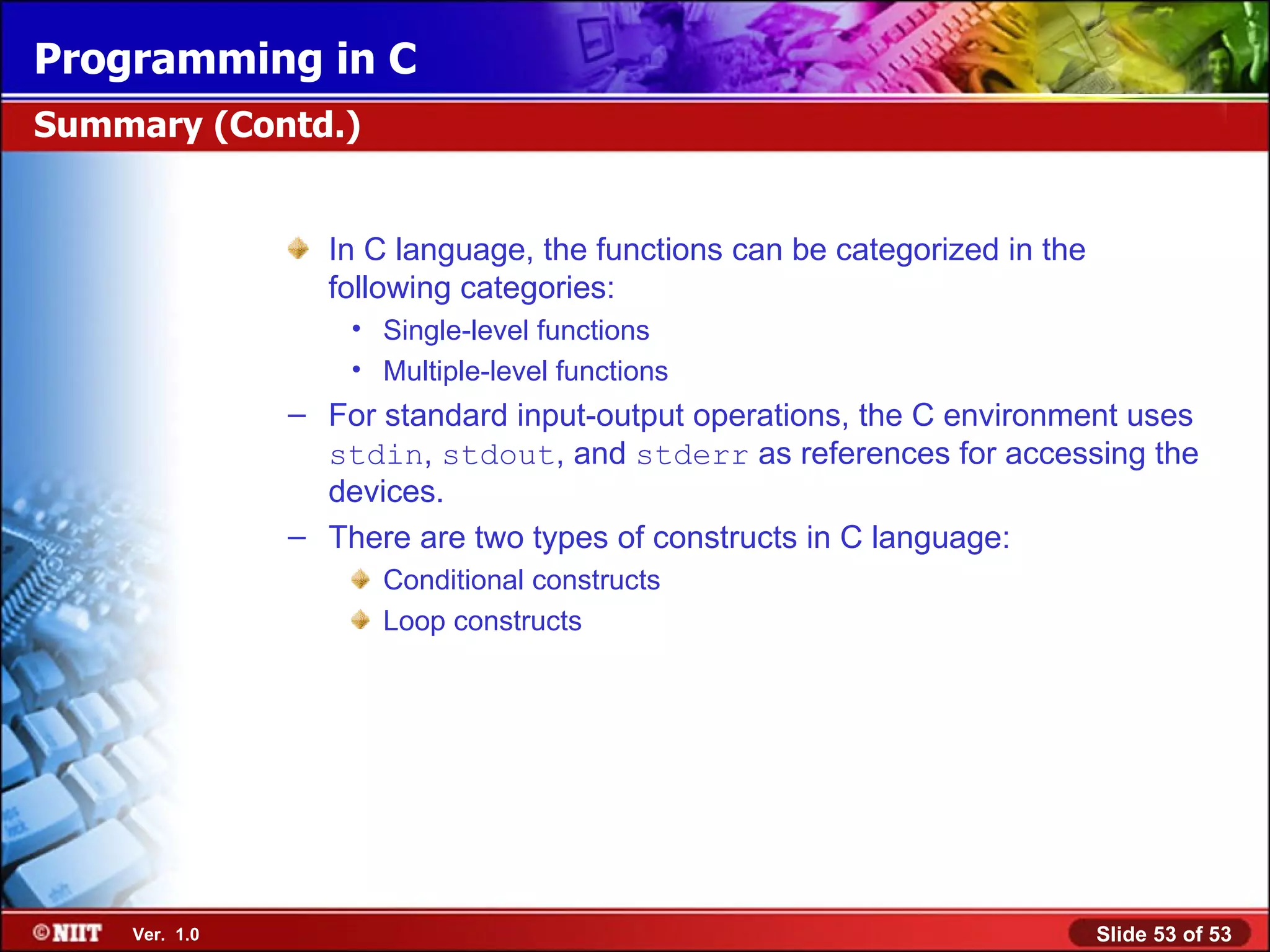The document discusses various topics related to C language including: - Benefits and features of C like low-level operations, structured programming, and modular programming - Data types in C like fundamental types (char, int, float), derived types, and defining variables - Structure of C functions including single-level and multiple-level functions - Input-output functions in C like character-based (getc, putc), string-based (gets, puts)
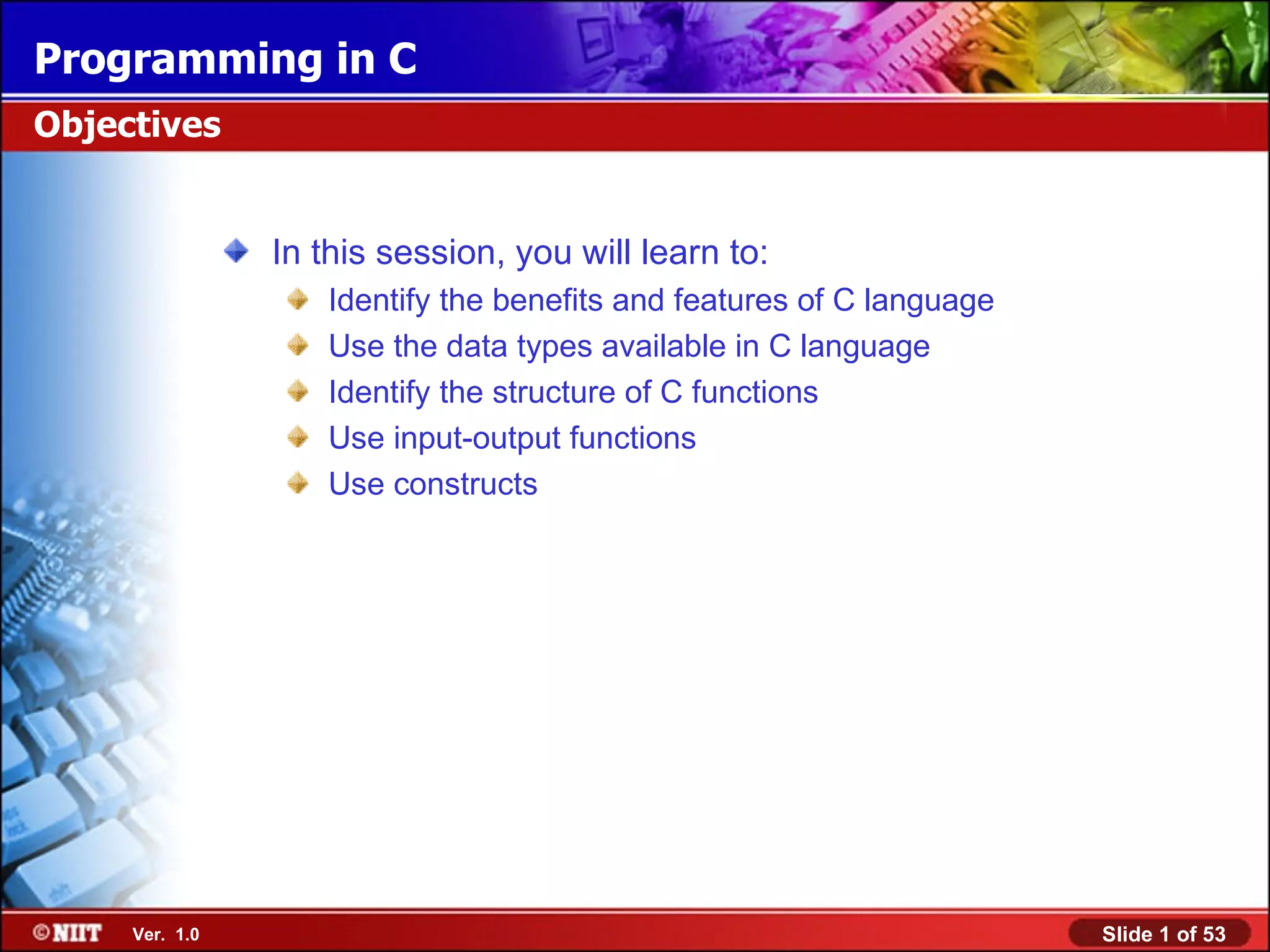
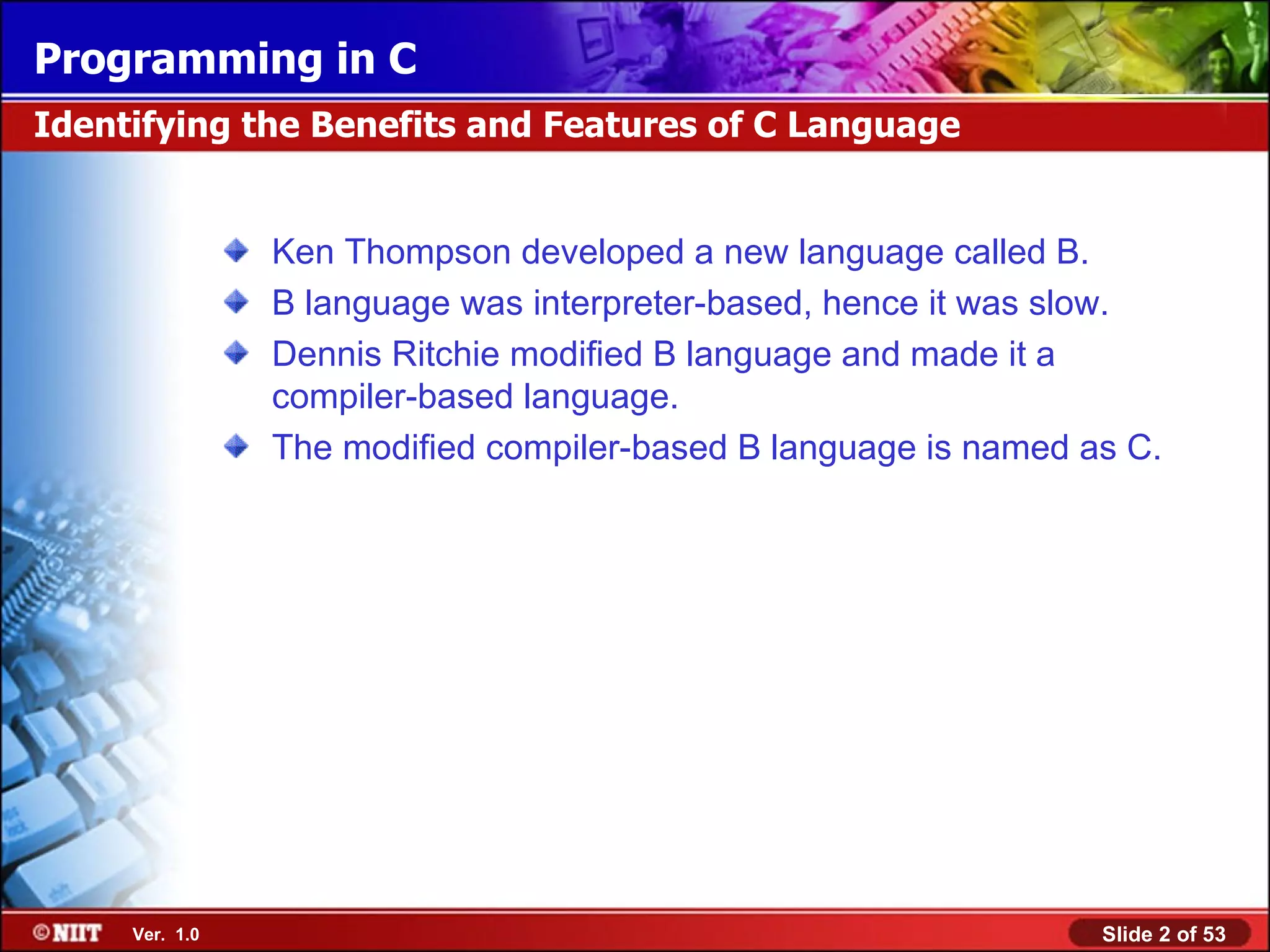
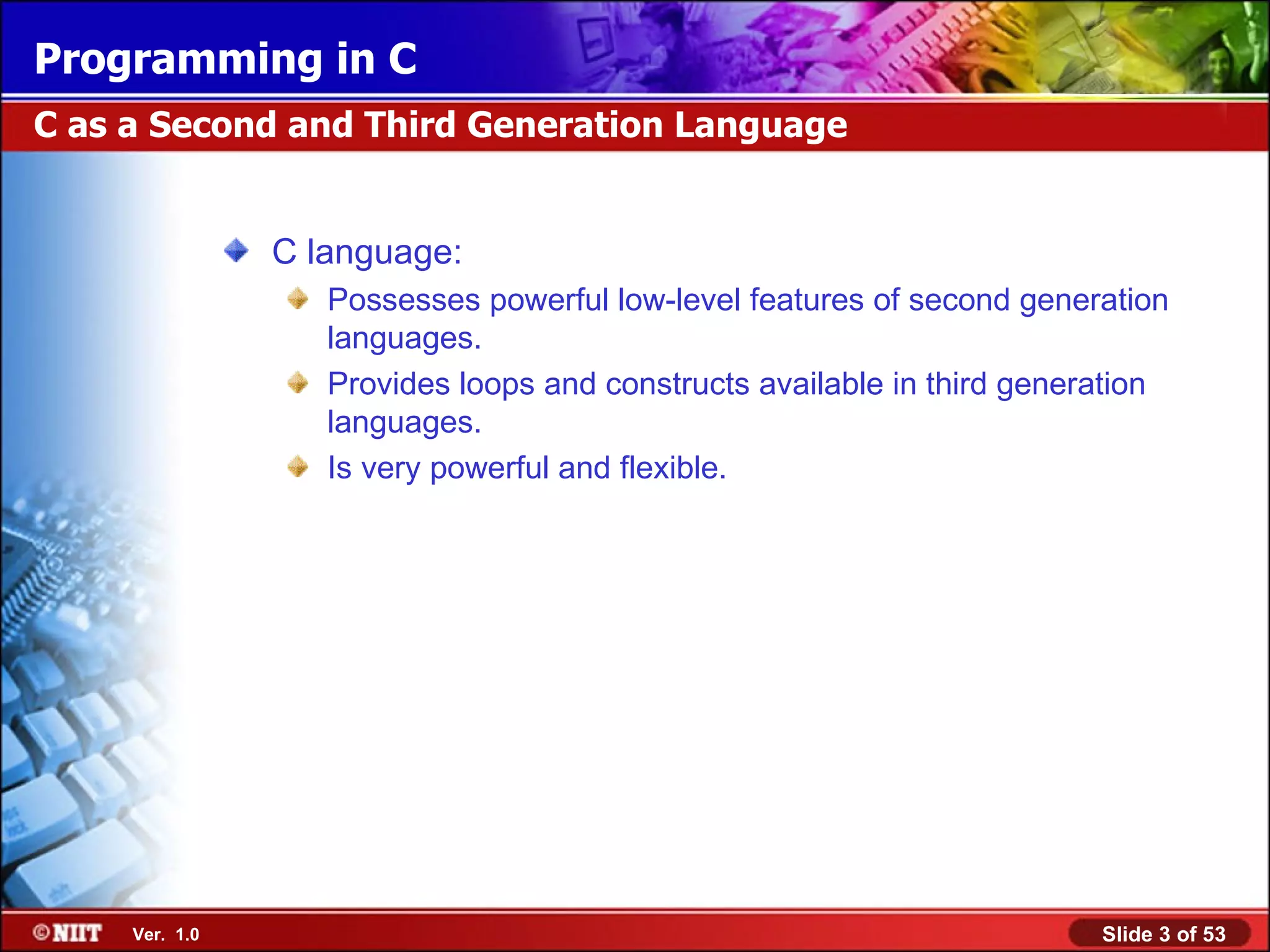
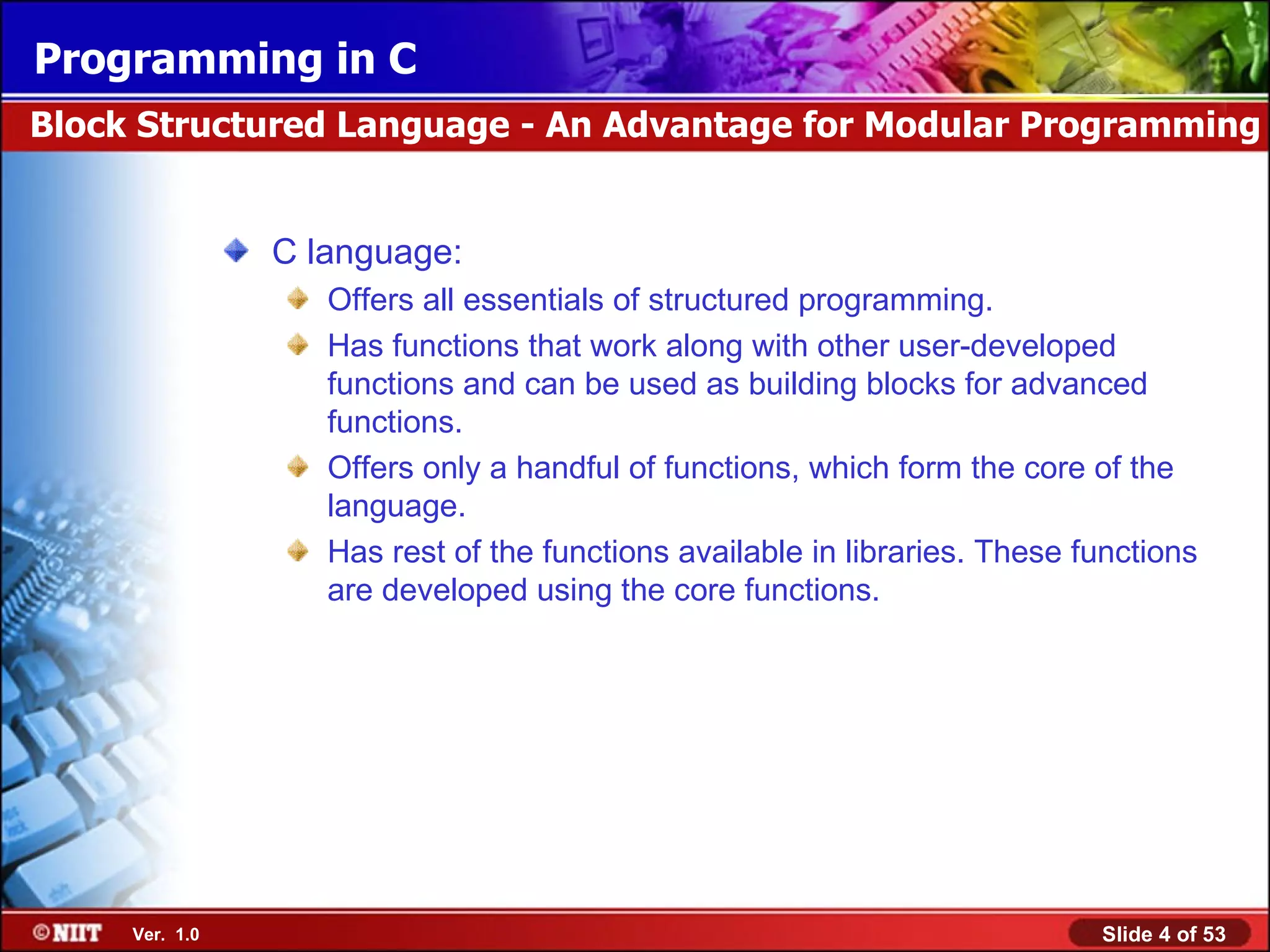
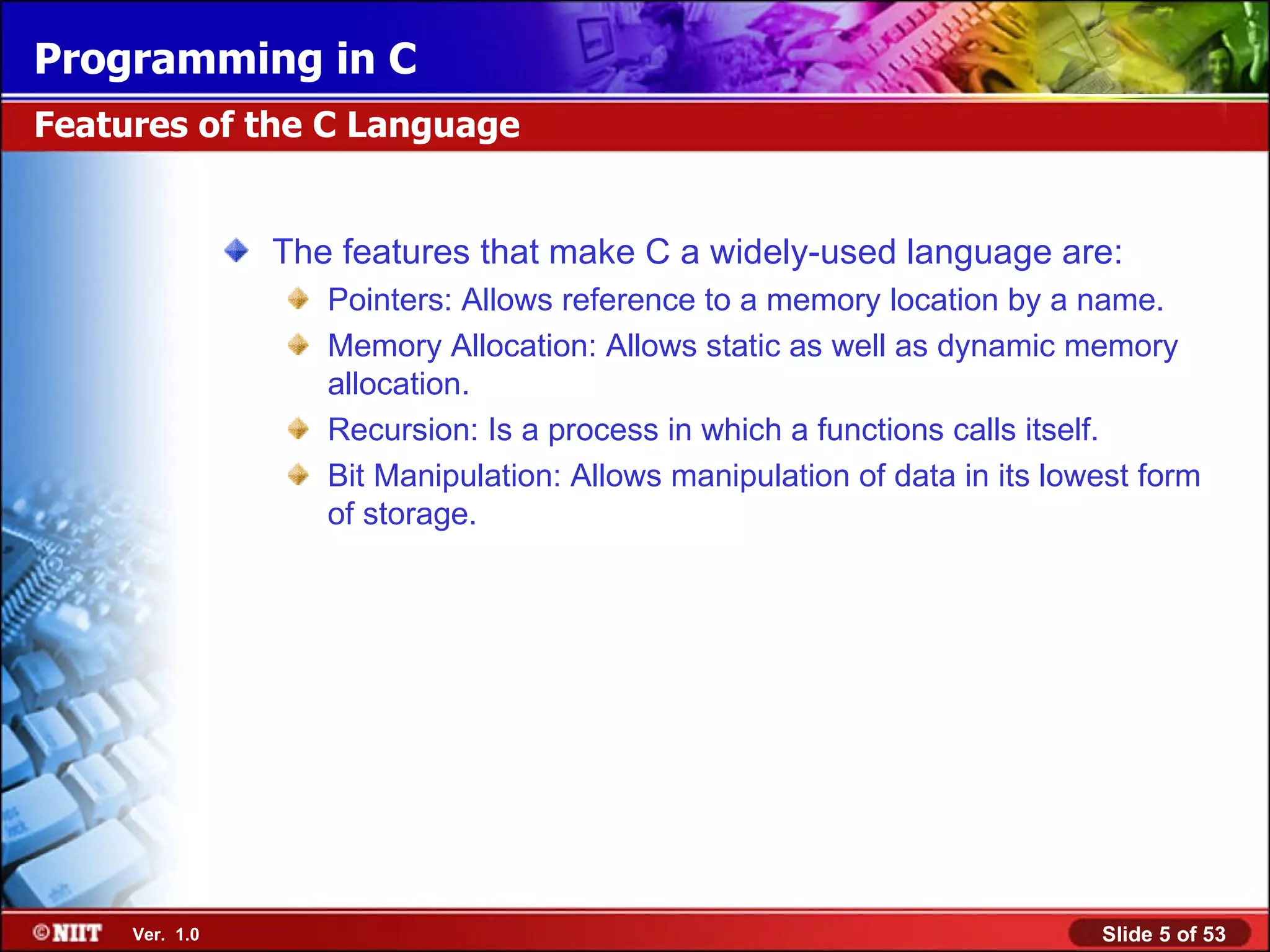
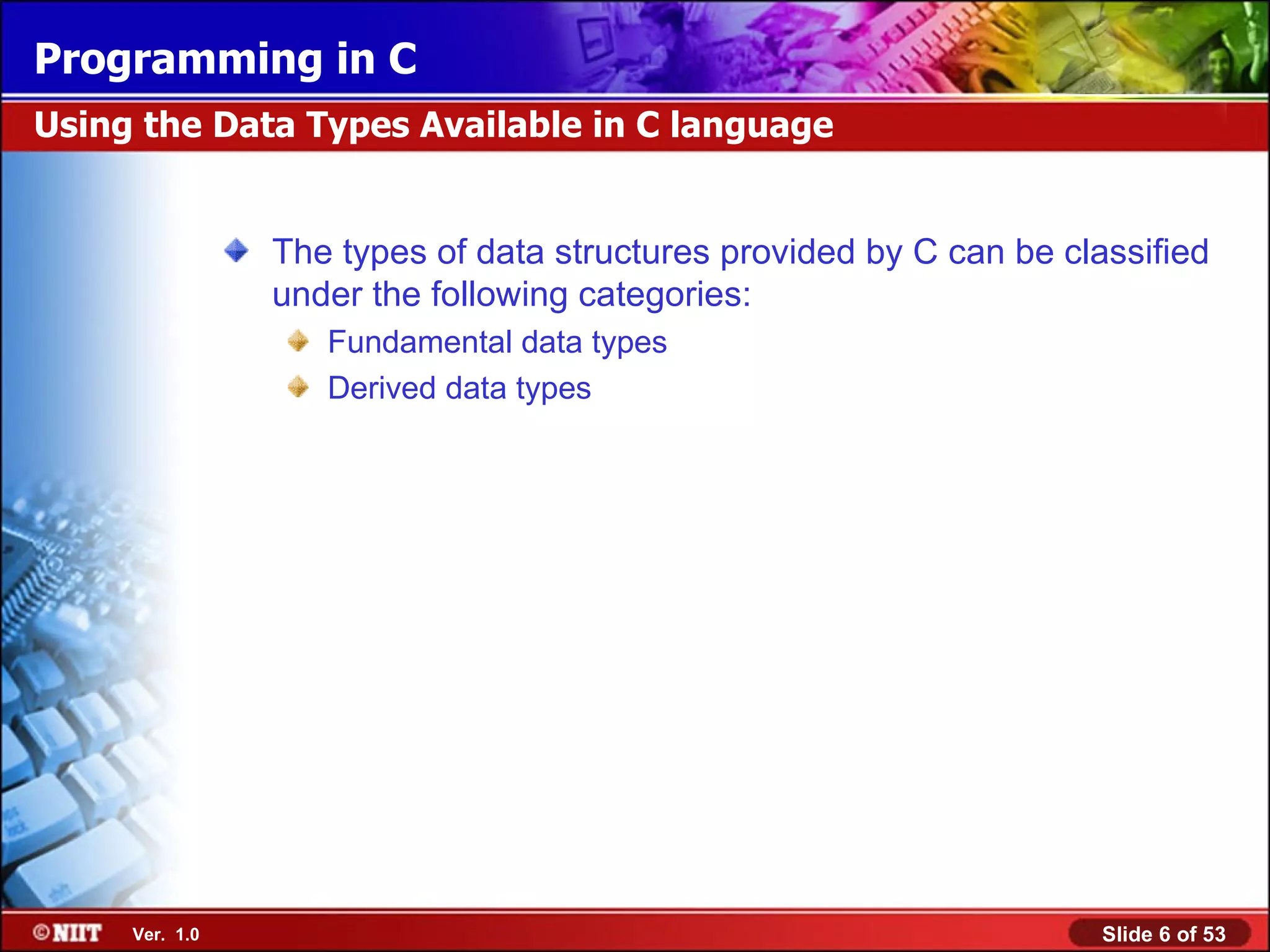
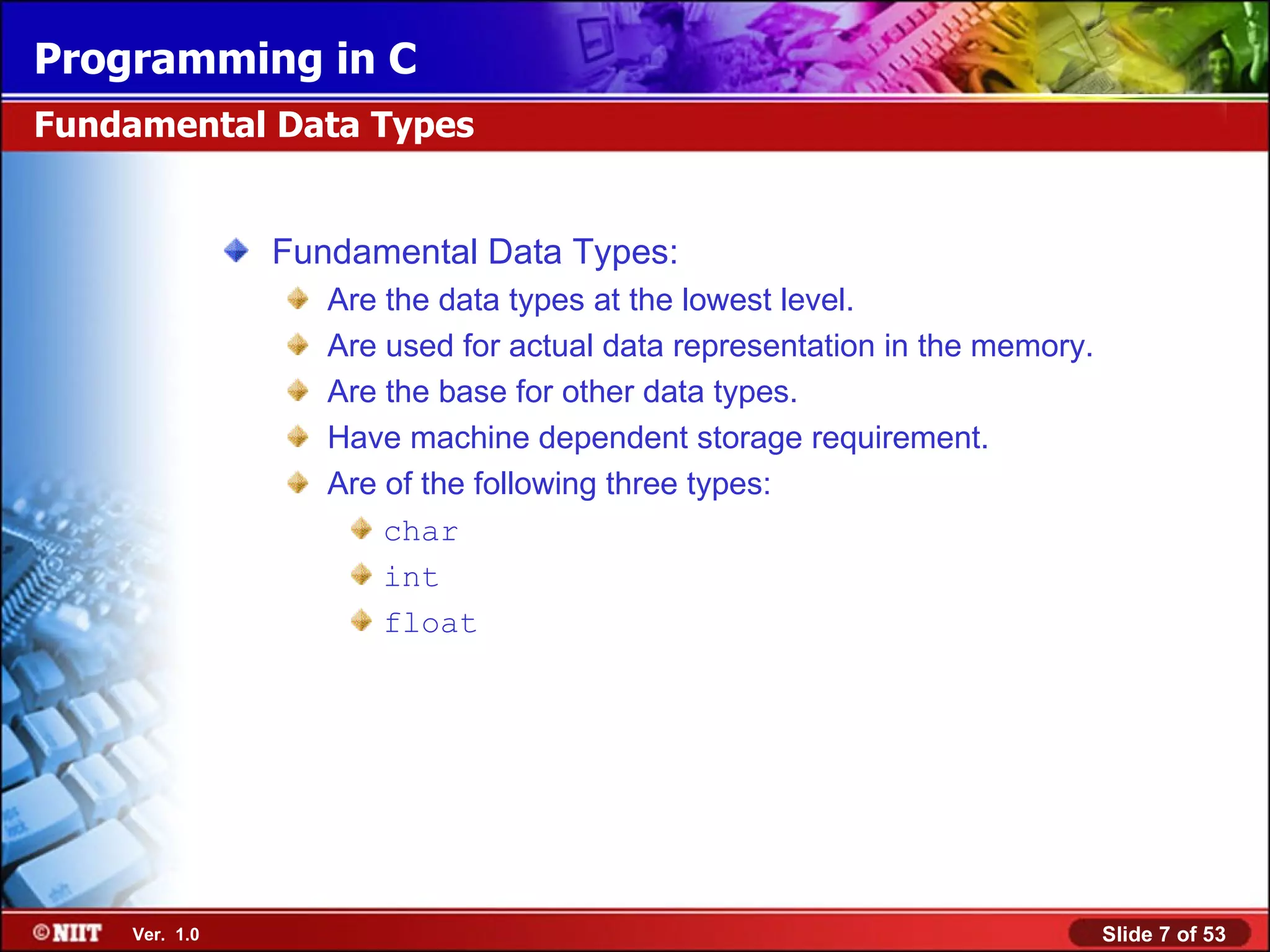
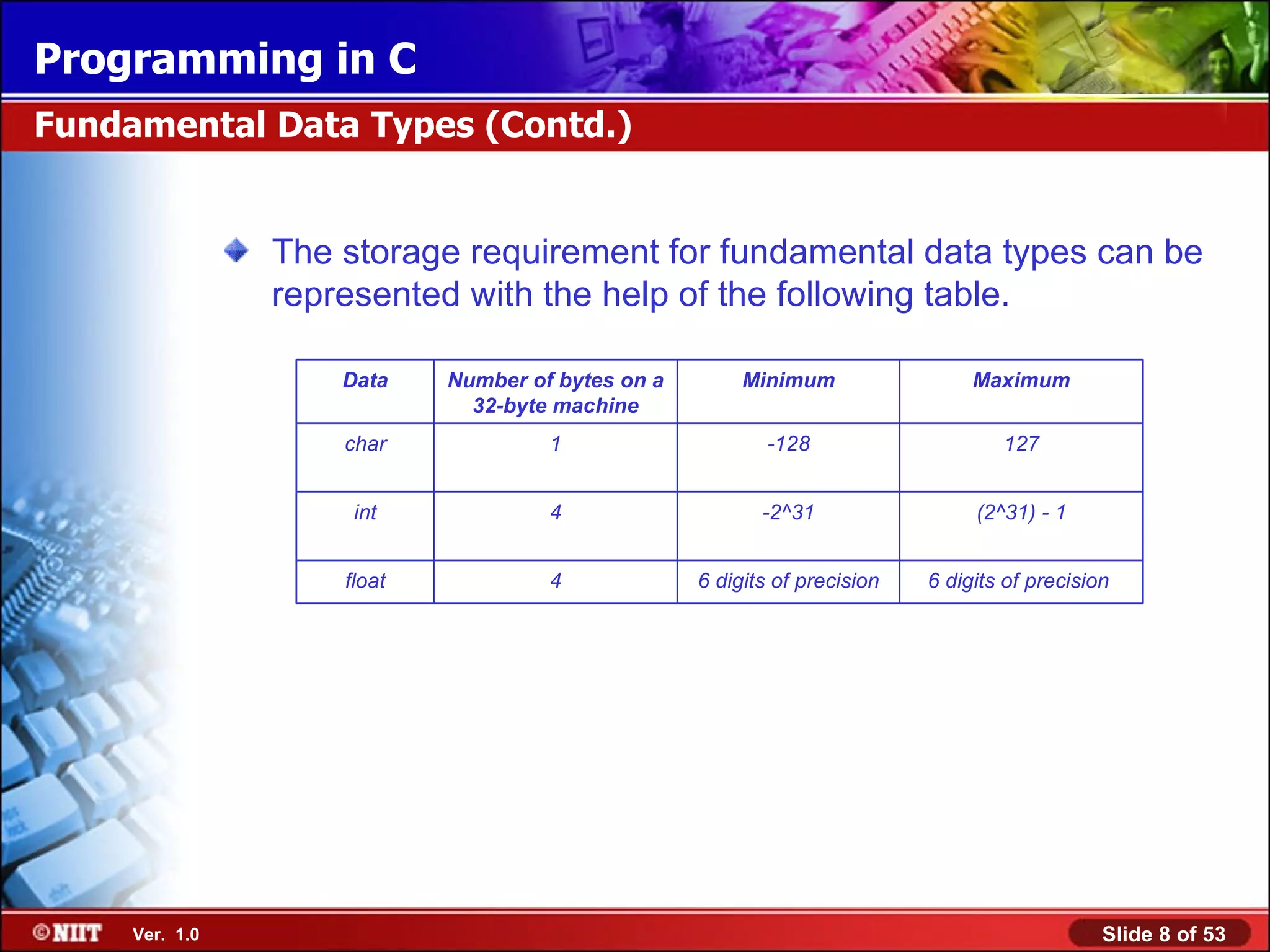
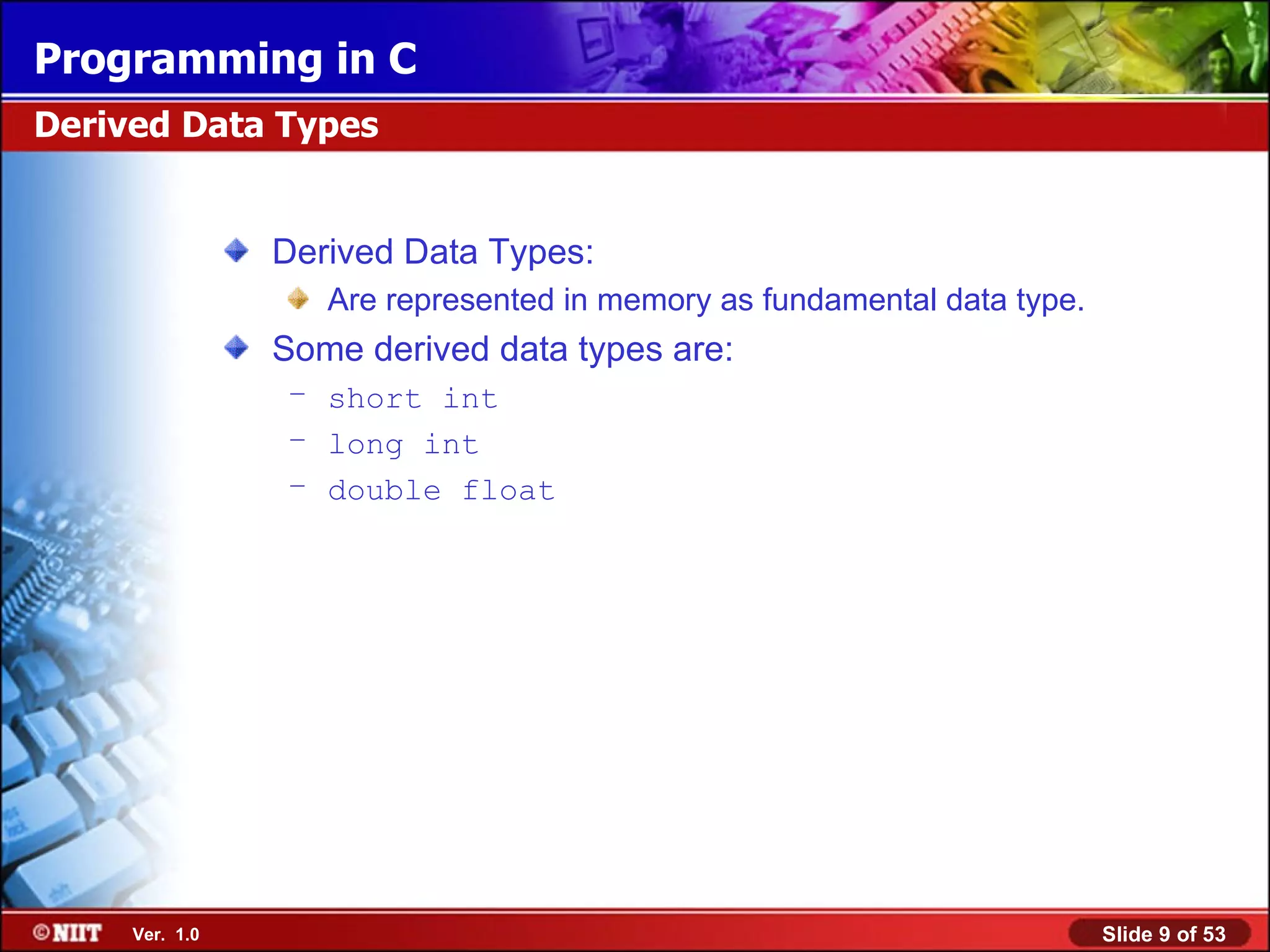
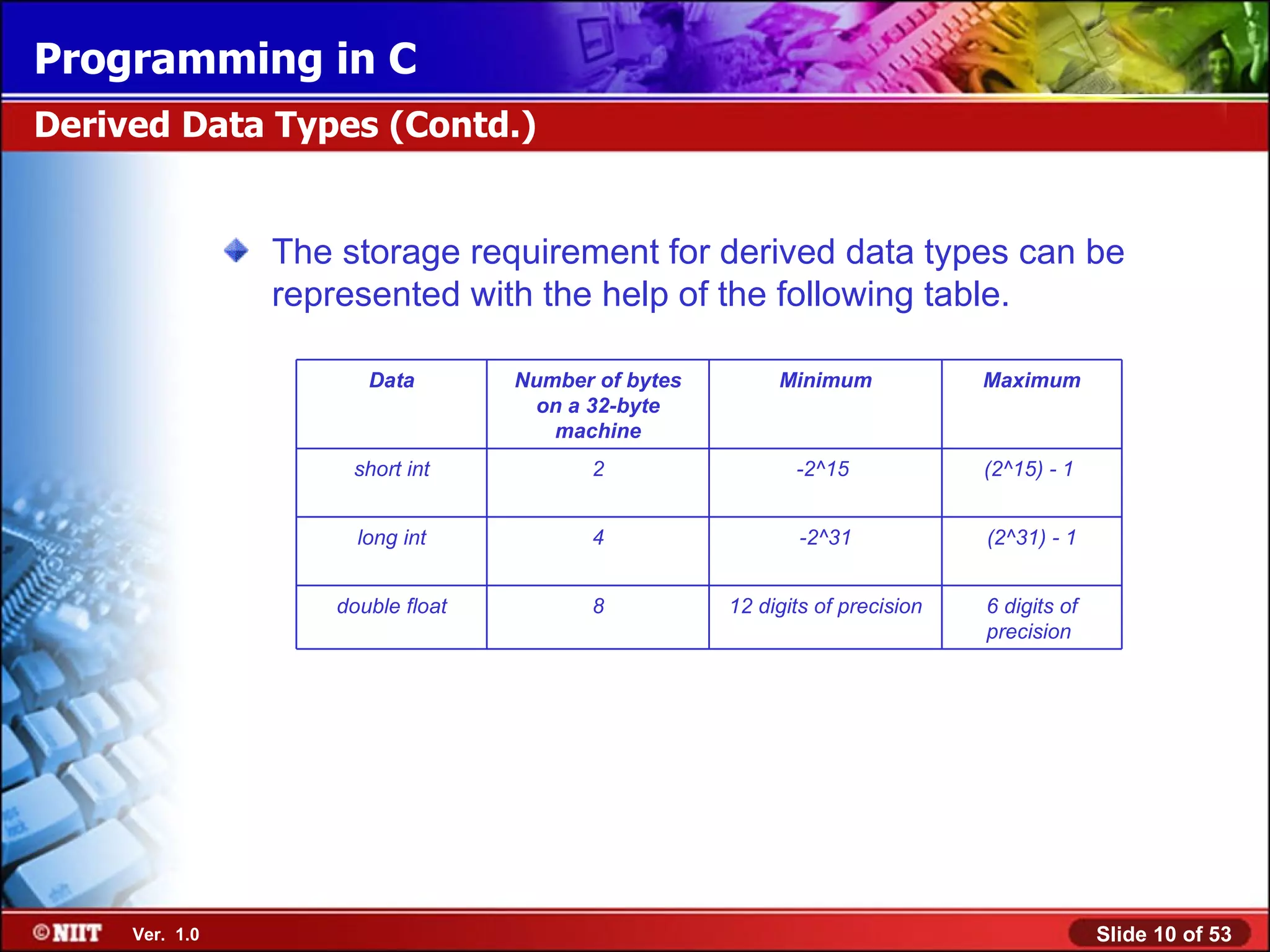
![The syntax for defining data is: [data type] [variable name],...; Declaration is done in the beginning of a function. Definition for various data types is shown in the following table. Defining Data Data definition Data type Memory defined Size (bytes) Value assigned char a, c; char a c 1 1 - - char a = 'Z'; char a 1 Z int count; int count 4 - int a, count =10; int a count 4 4 - 10 float fnum; float fnum 4 - float fnum1, fnum2 = 93.63; float fnum1 fnum2 4 4 - 93.63](https://image.slidesharecdn.com/cprogrammingsession01-110830105743-phpapp01/75/C-programming-session-01-11-2048.jpg)
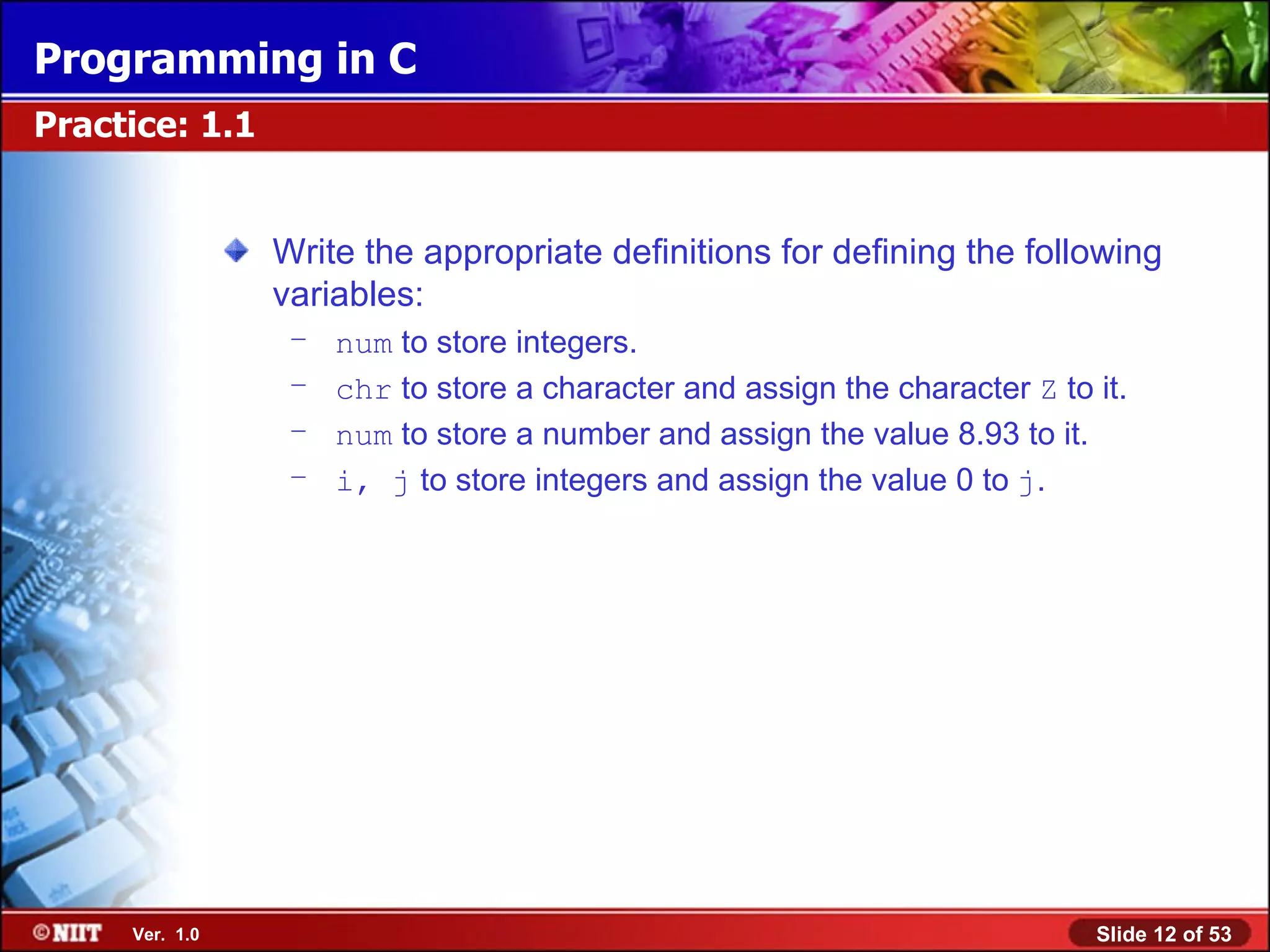
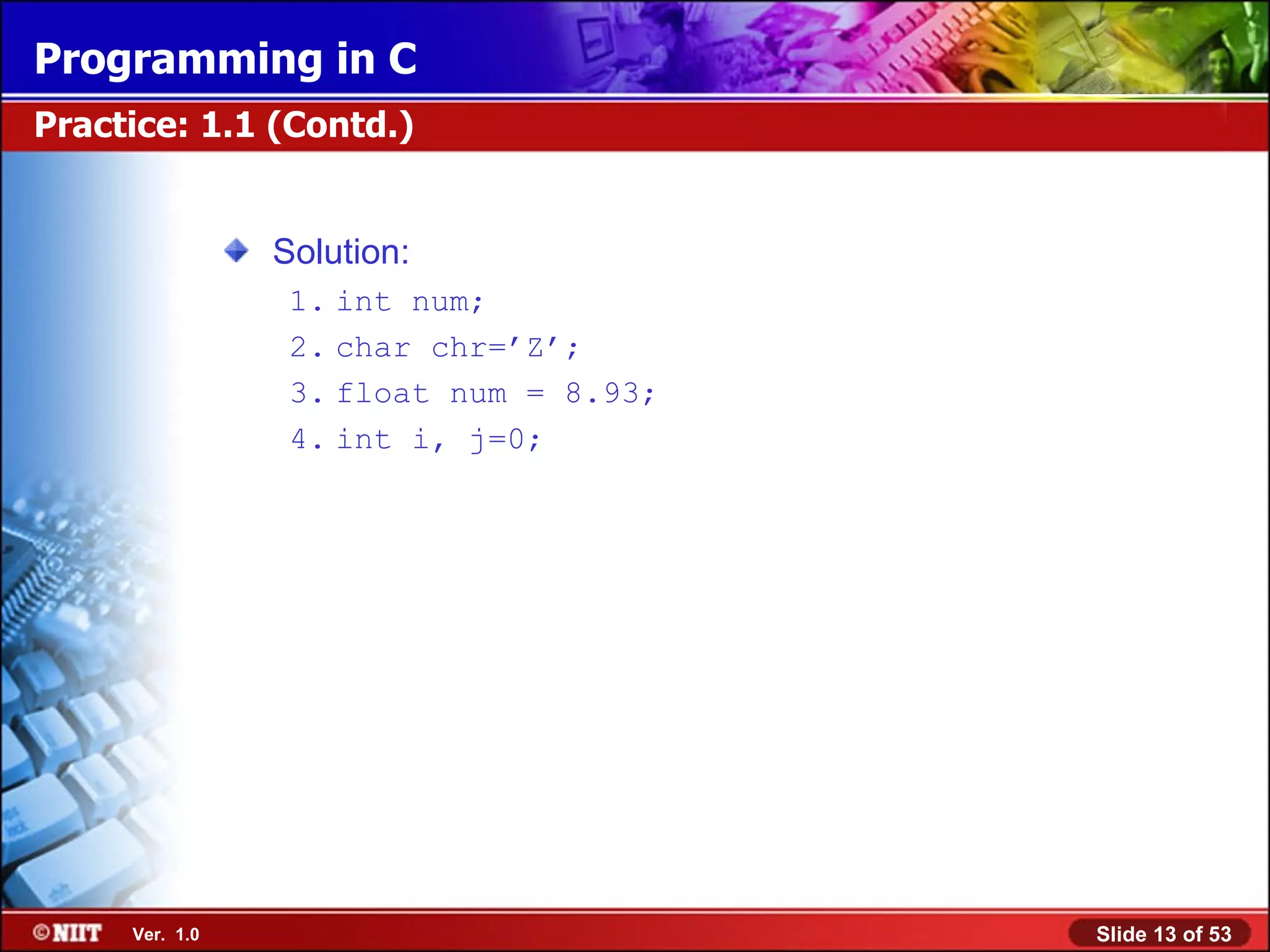
![Defining Strings: Syntax: char (variable) [(number of bytes)]; Here number of bytes is one more than the number of characters to store. To define a memory location of 10 bytes or to store 9 valid characters, the string will be defined as follows: char string [10]; Defining Data (Contd.)](https://image.slidesharecdn.com/cprogrammingsession01-110830105743-phpapp01/75/C-programming-session-01-14-2048.jpg)
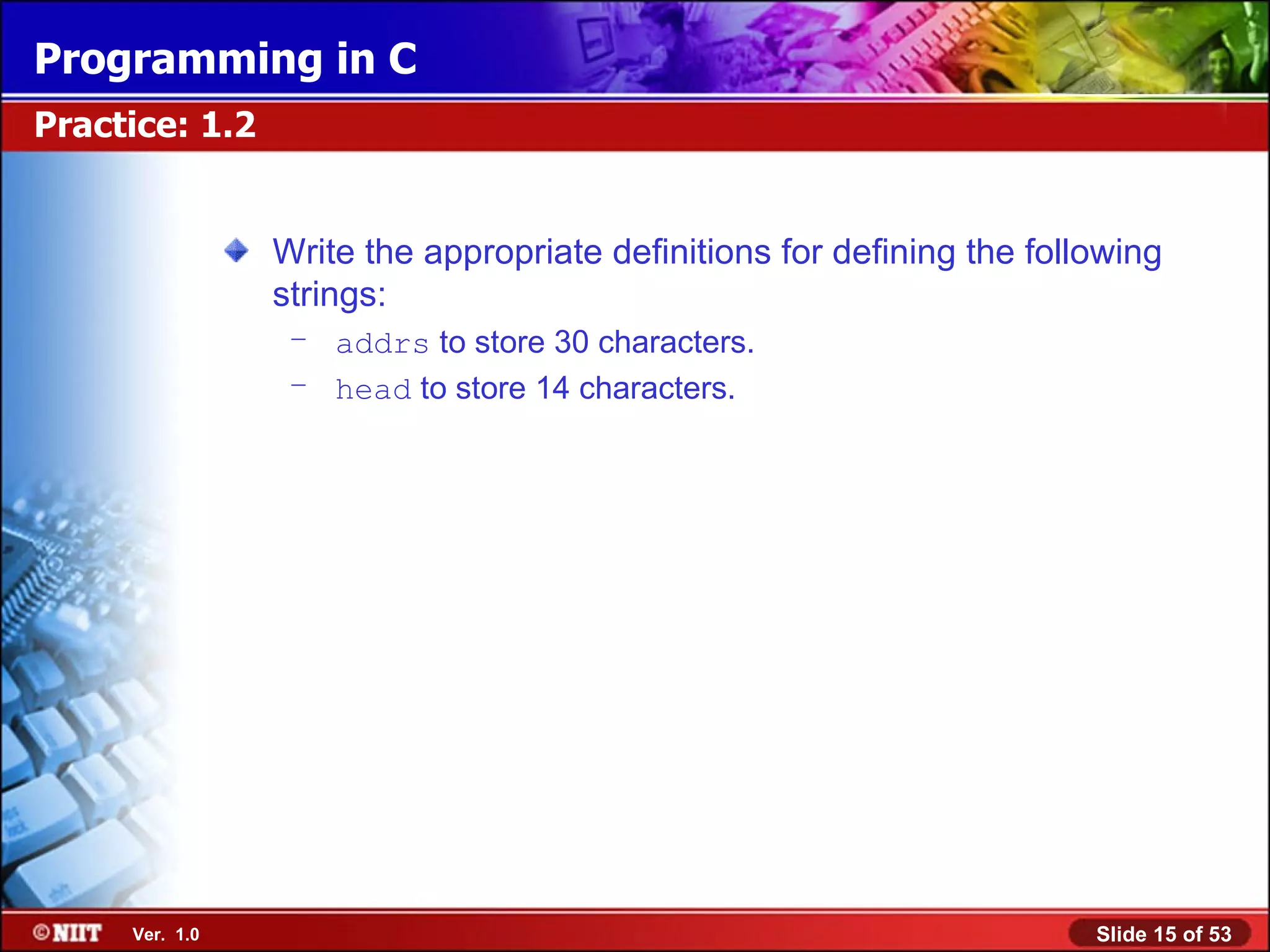
![Solution: char addrs[31]; char head[15]; Practice: 1.2 (Contd.)](https://image.slidesharecdn.com/cprogrammingsession01-110830105743-phpapp01/75/C-programming-session-01-16-2048.jpg)
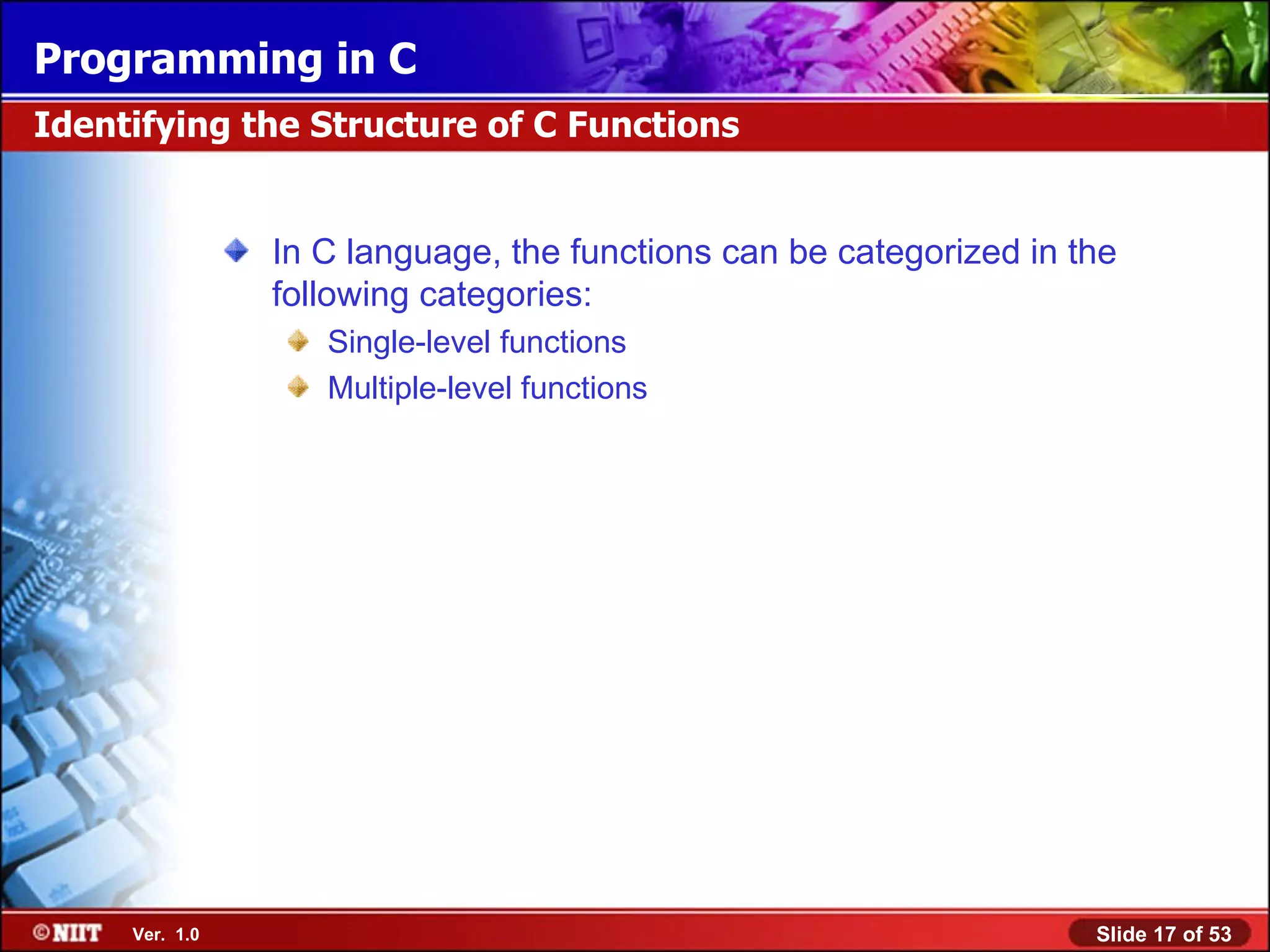
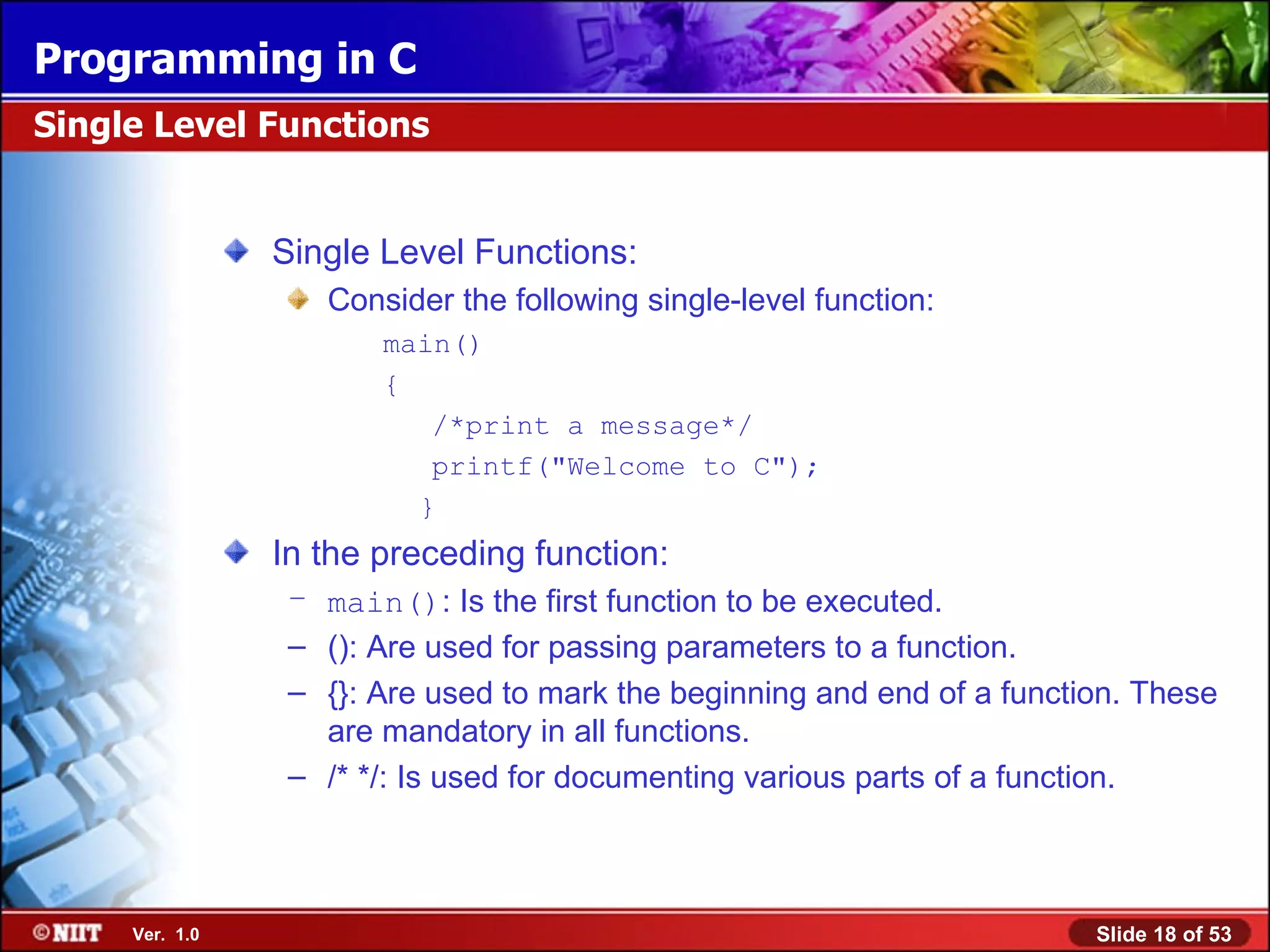
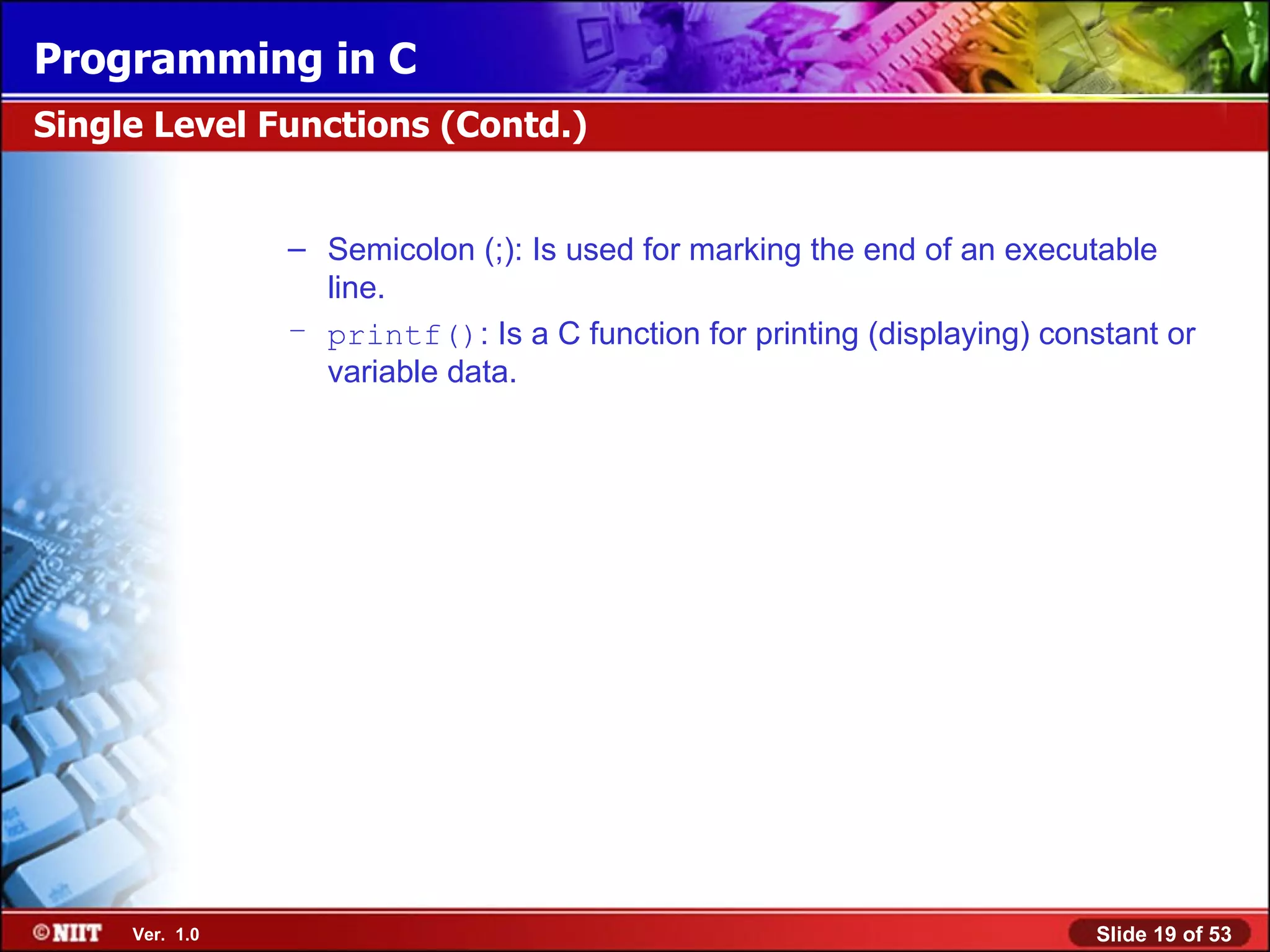
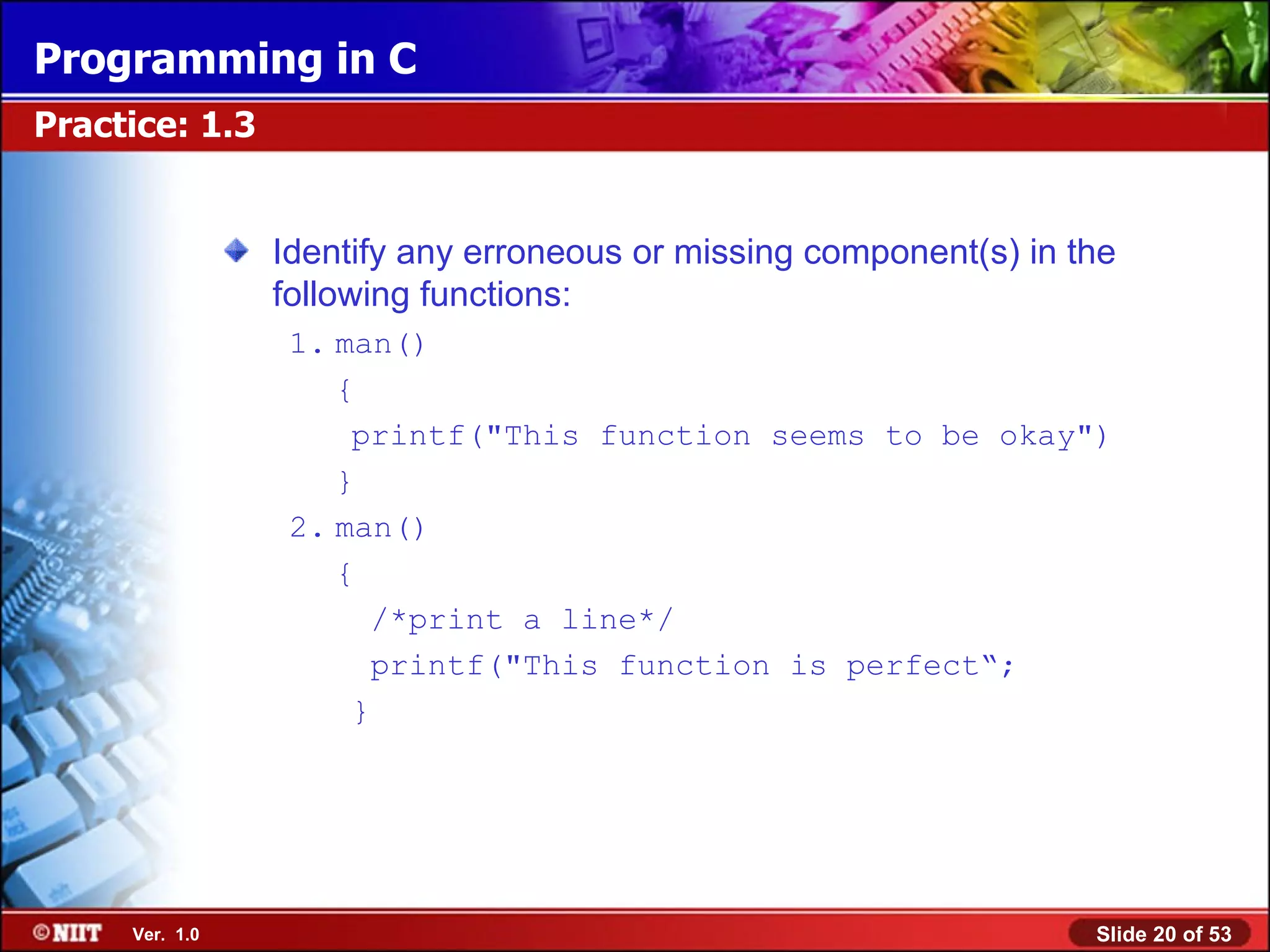
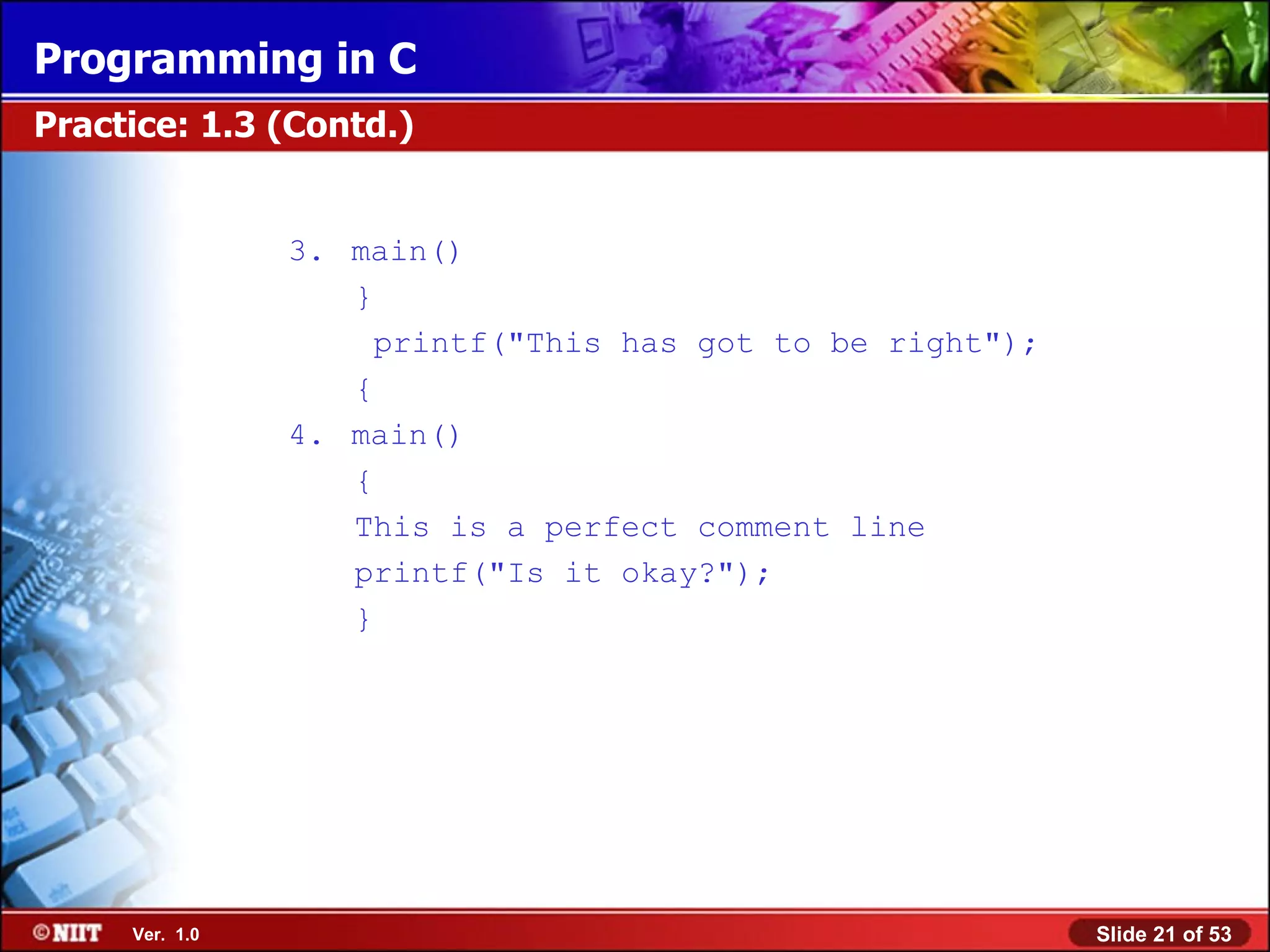
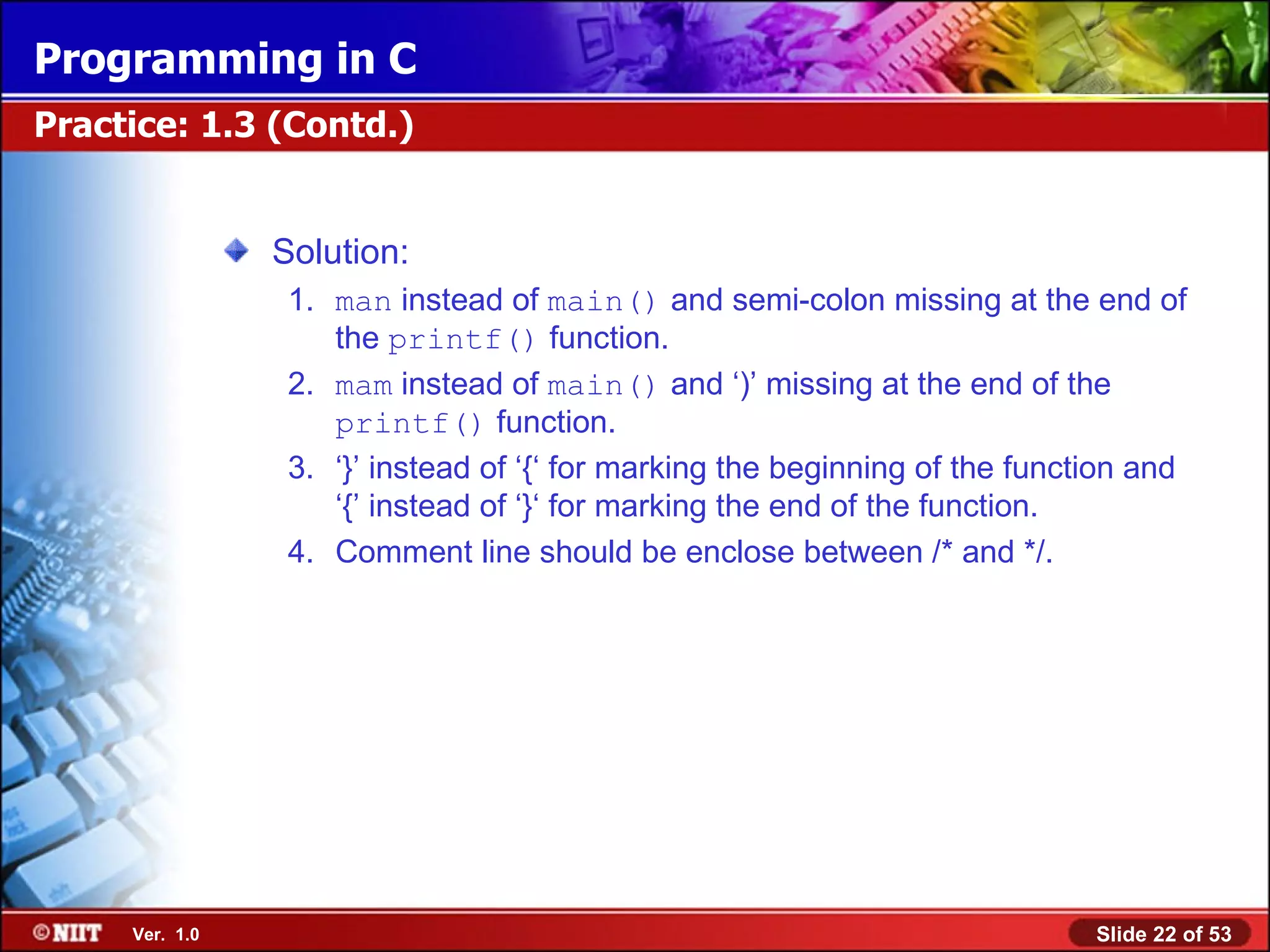
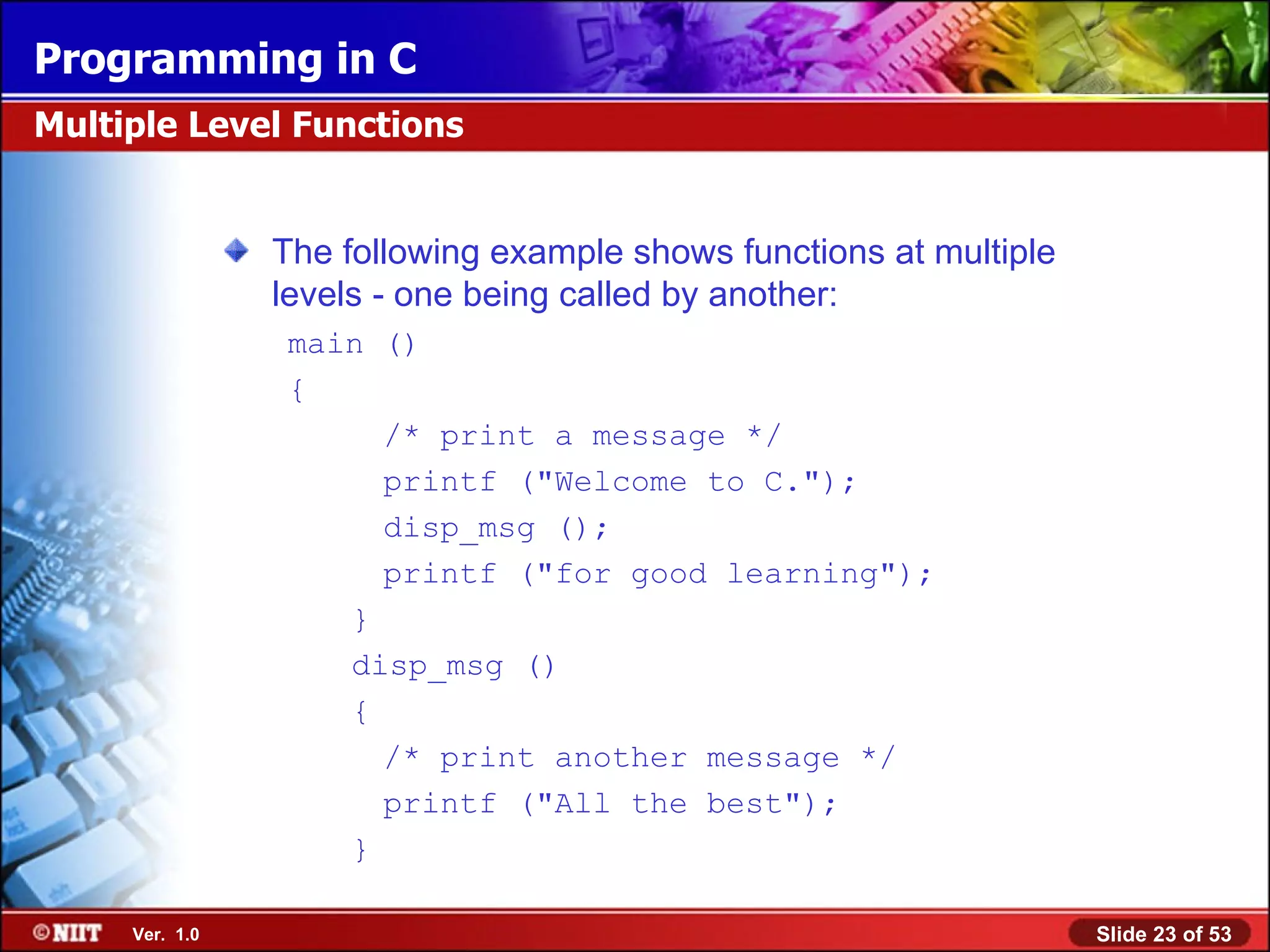
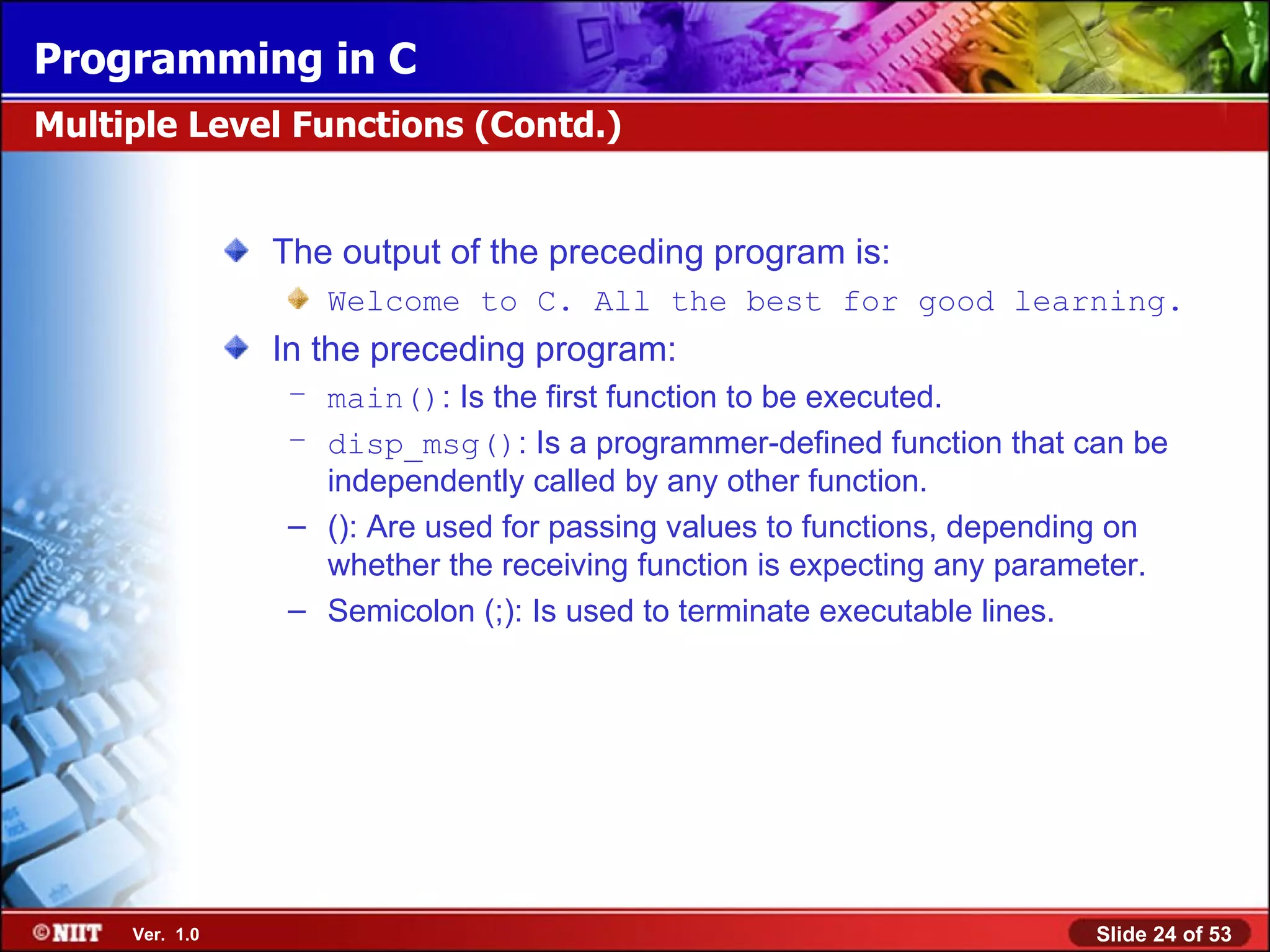
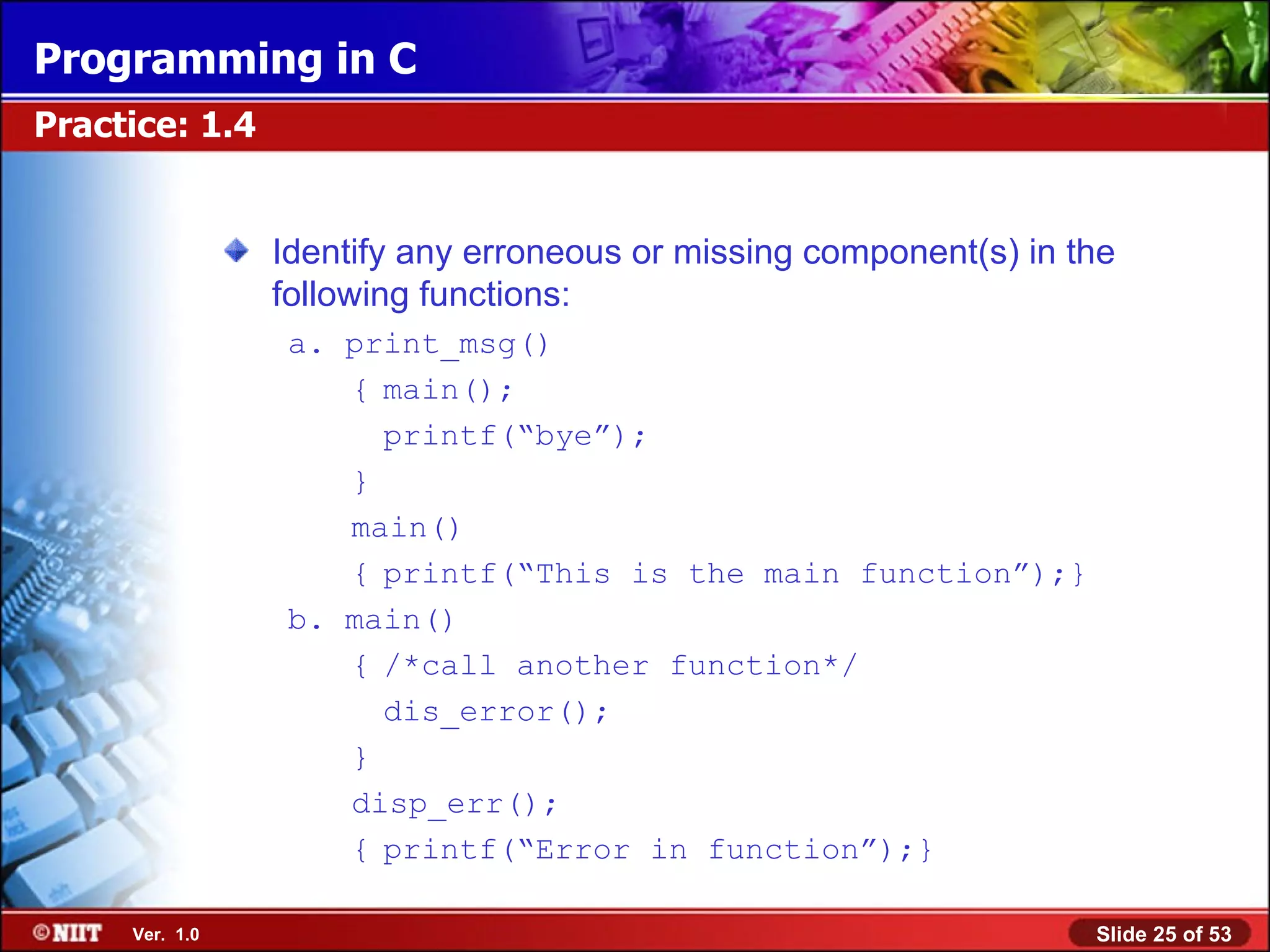
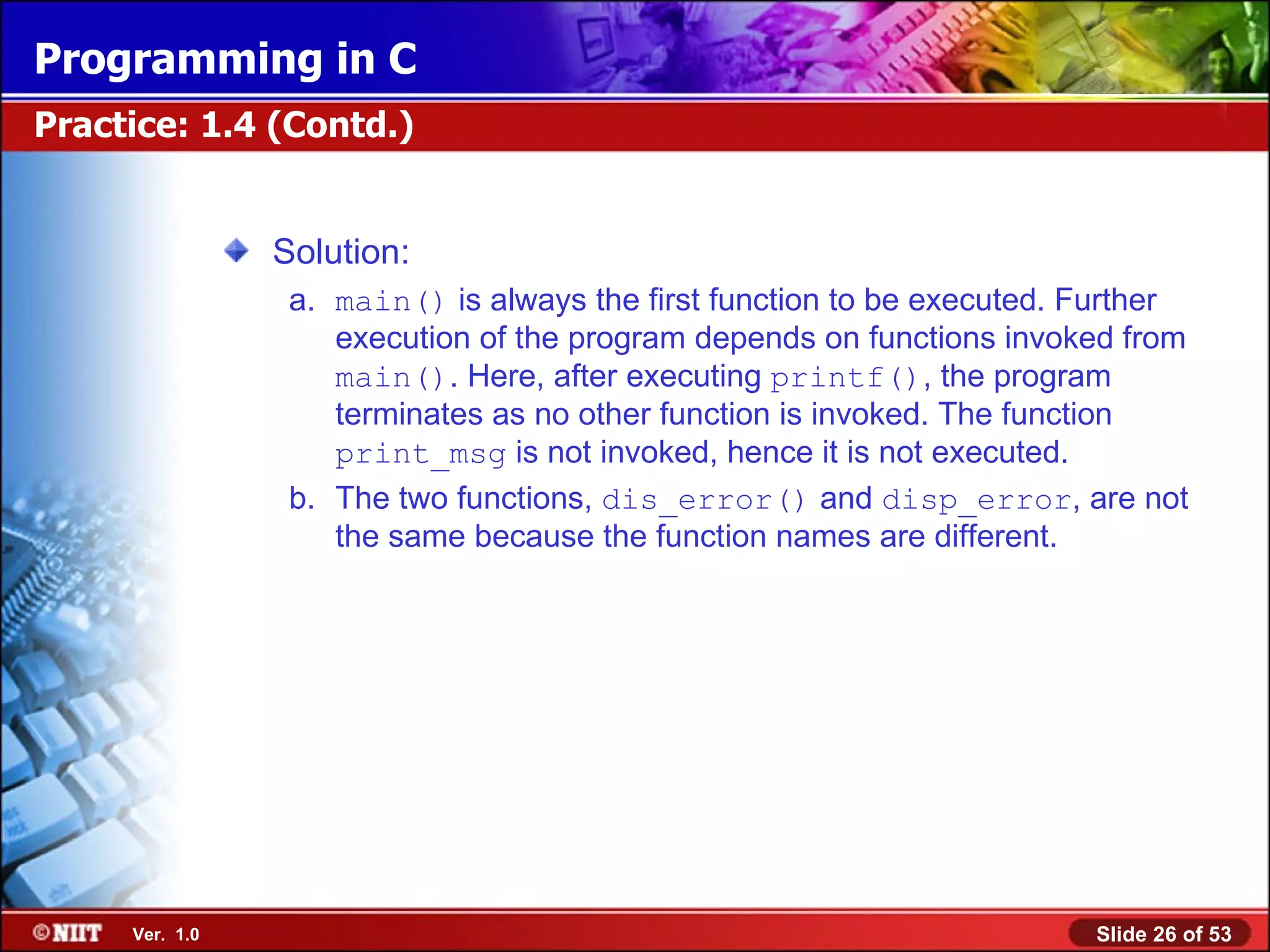
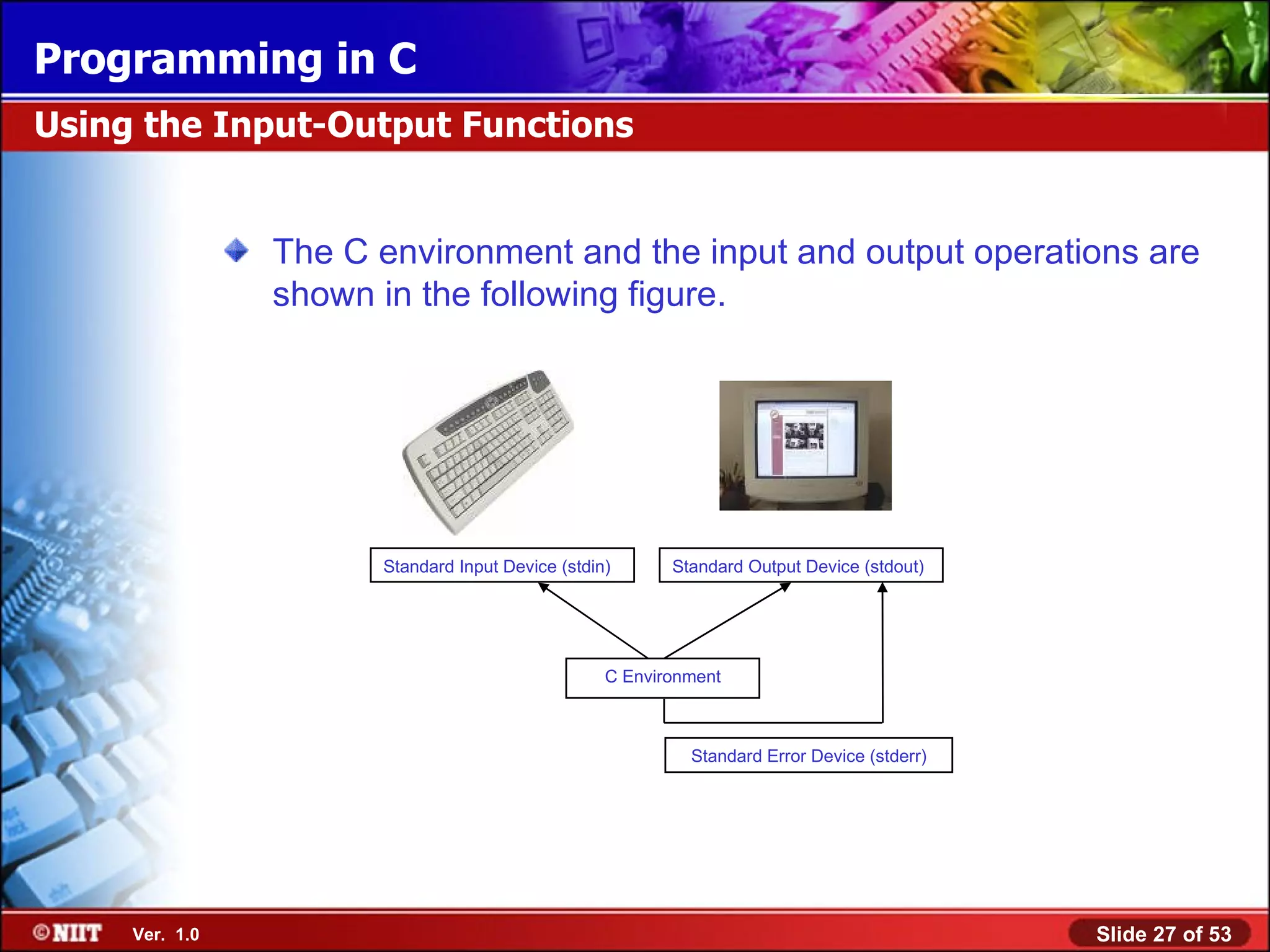
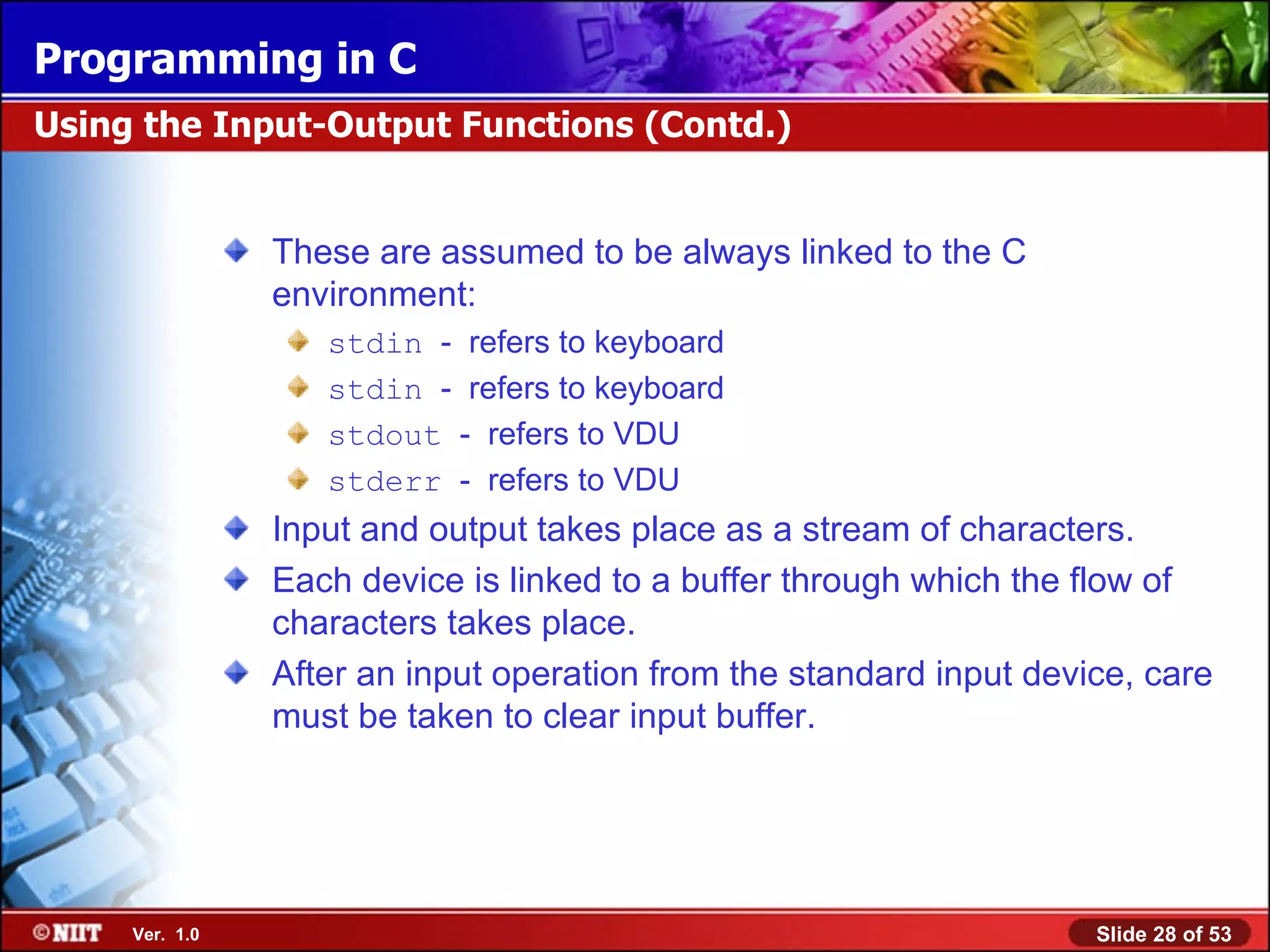
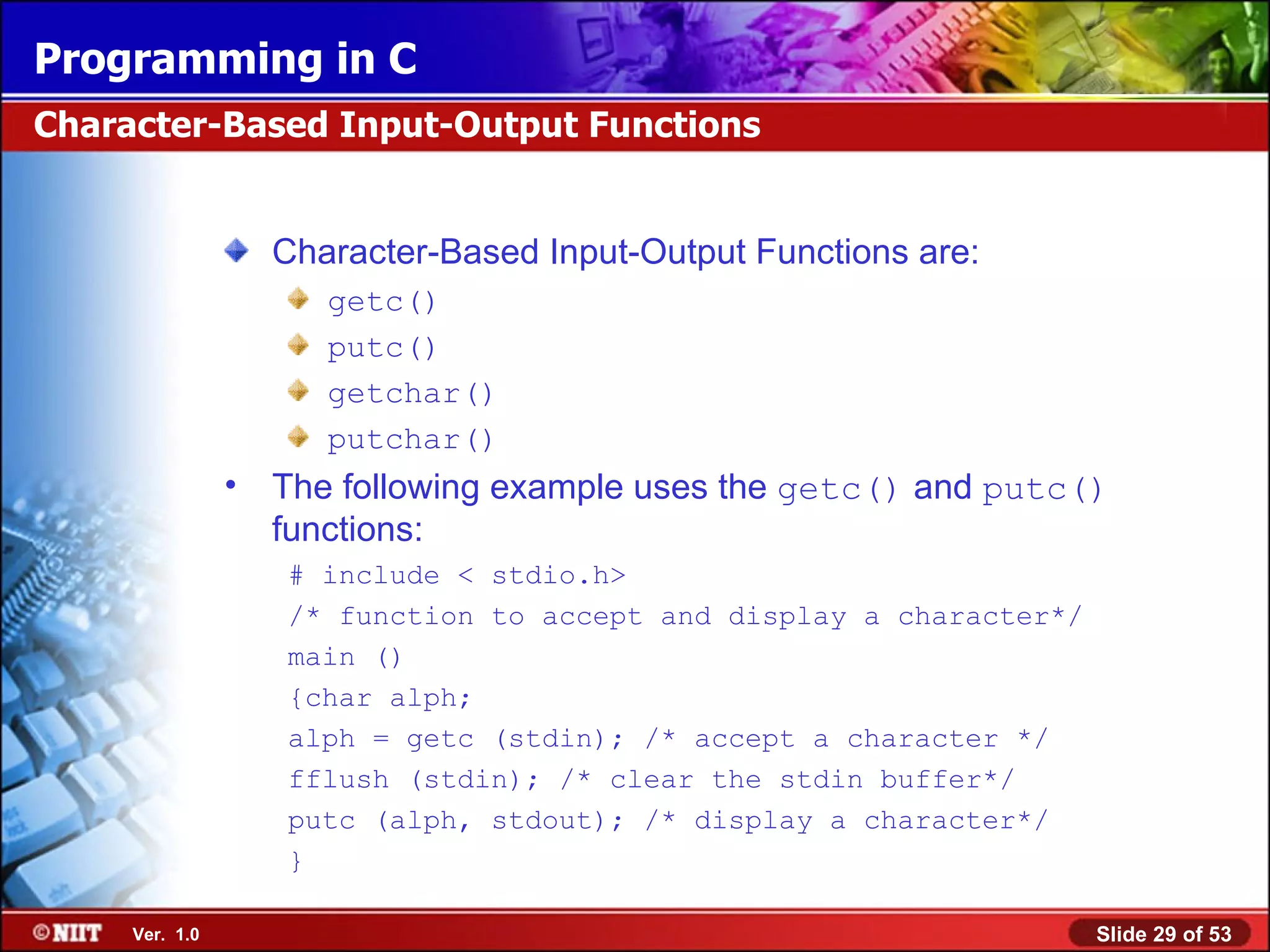
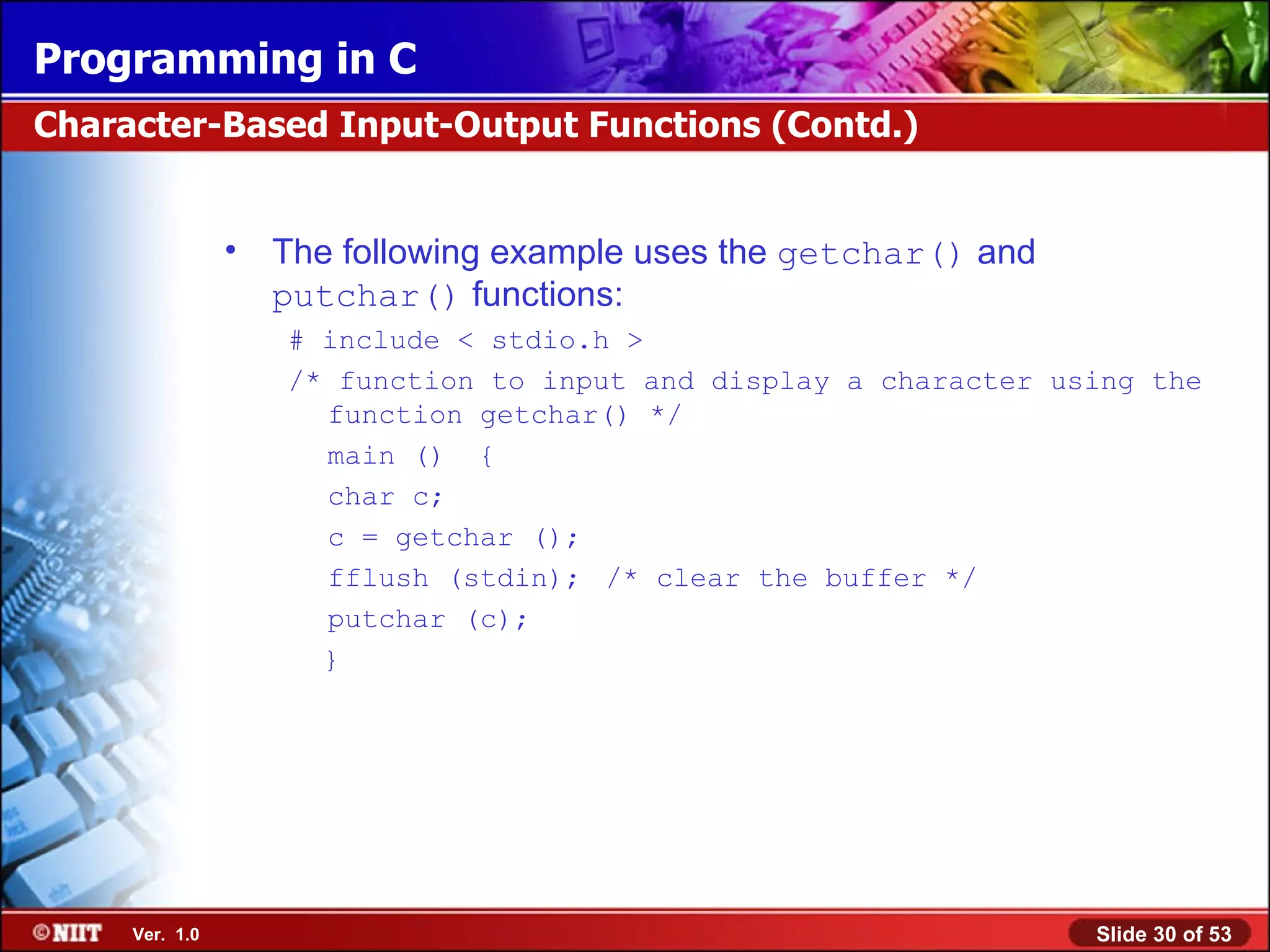
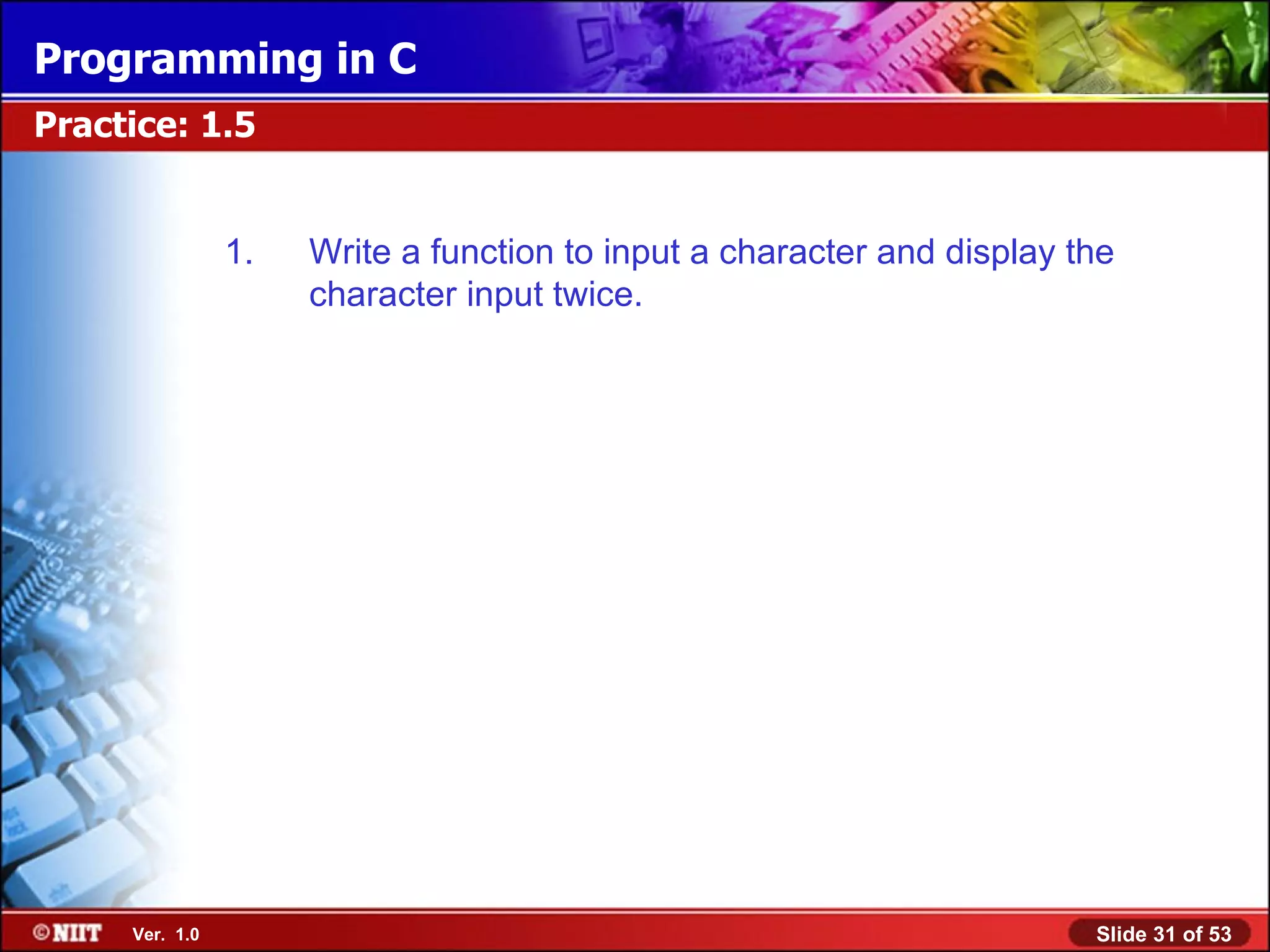
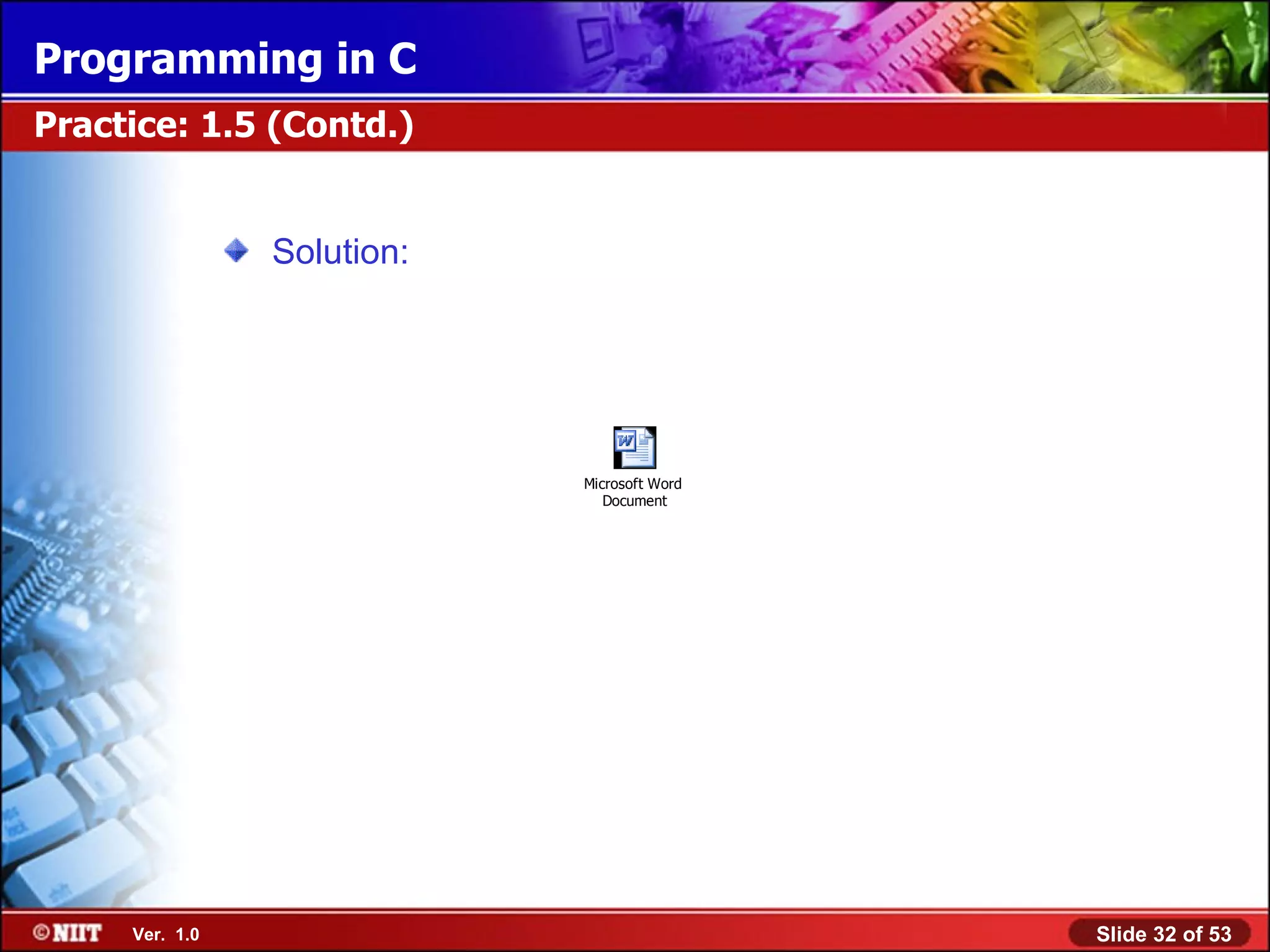
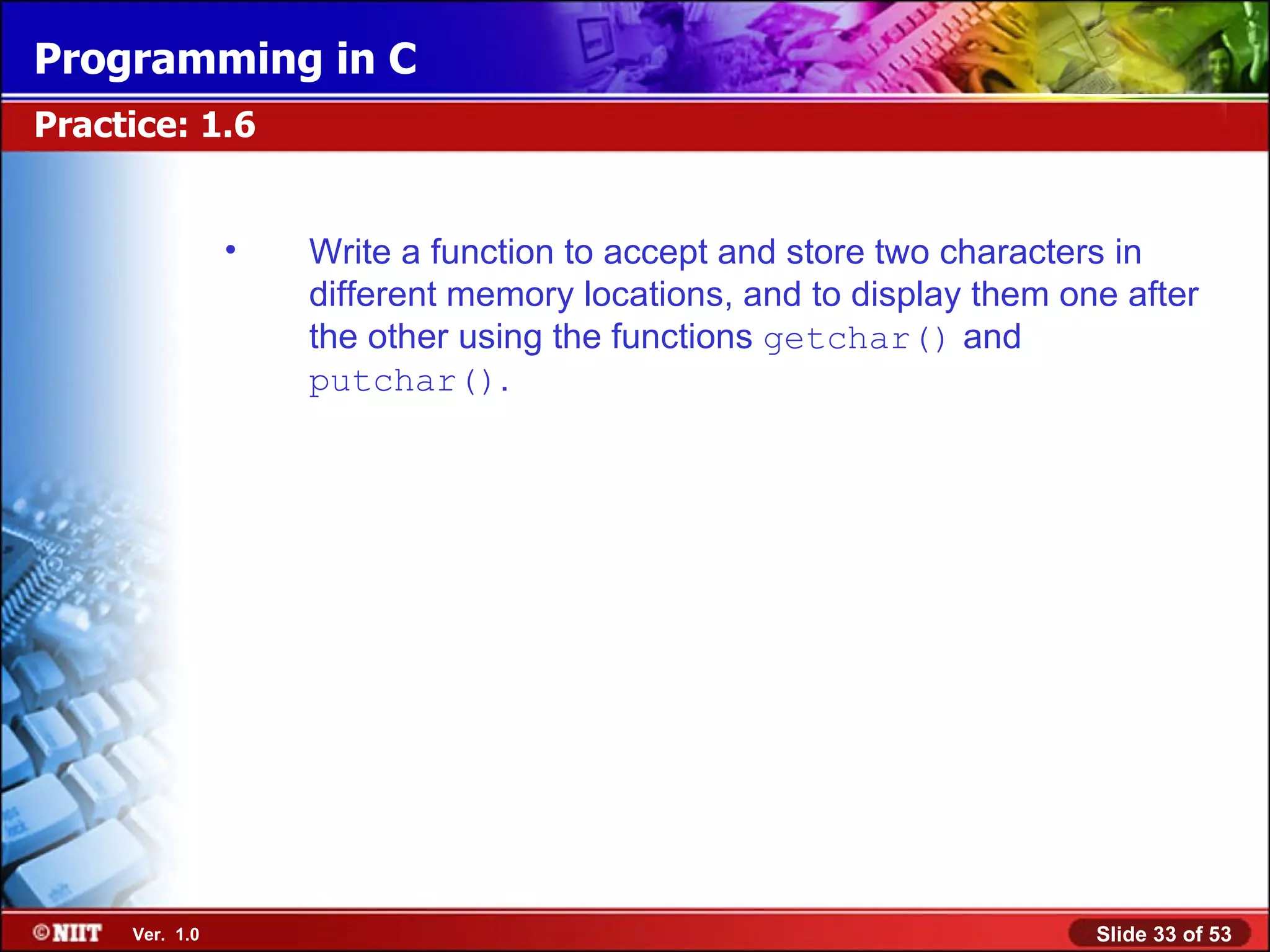
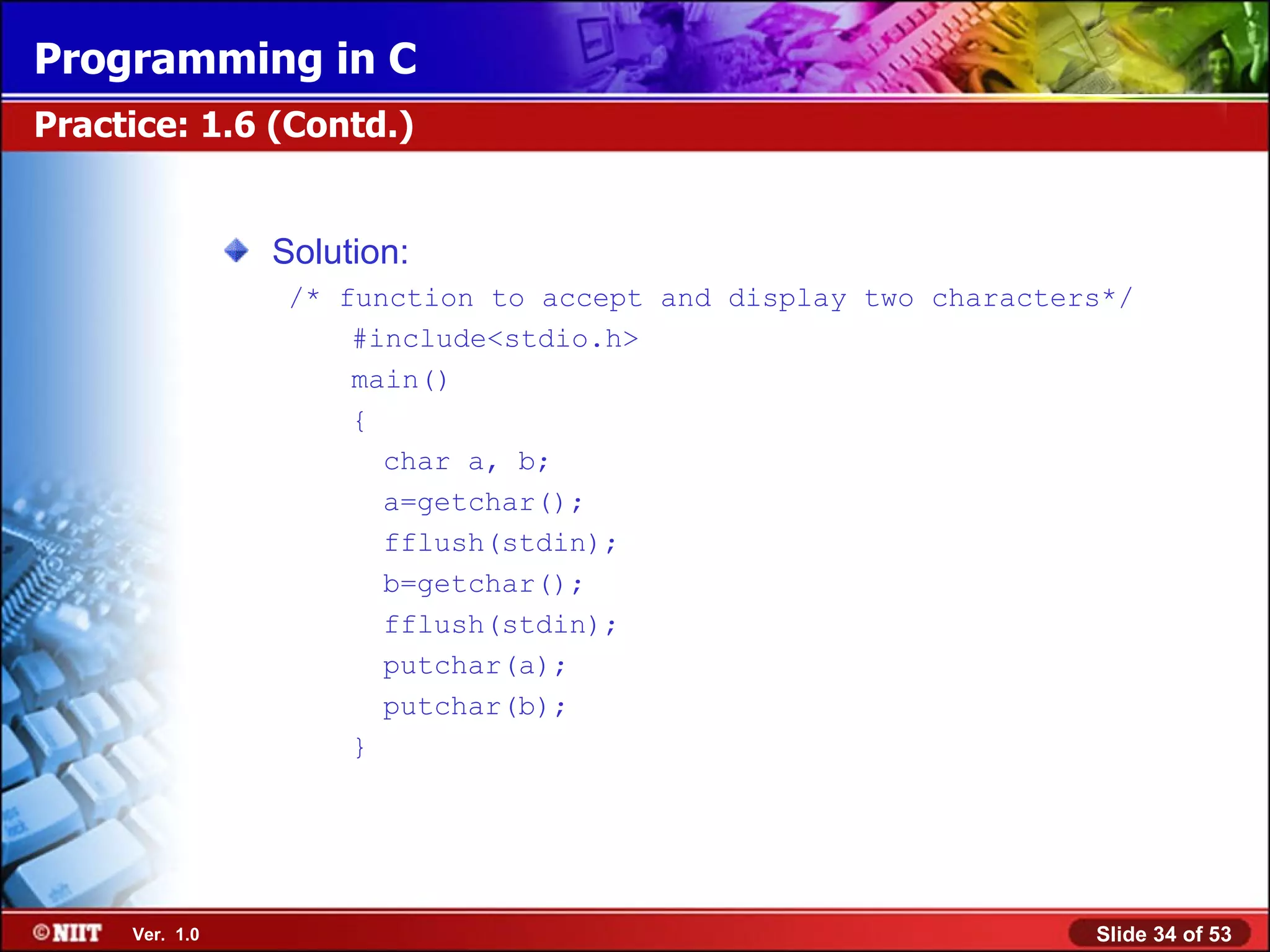
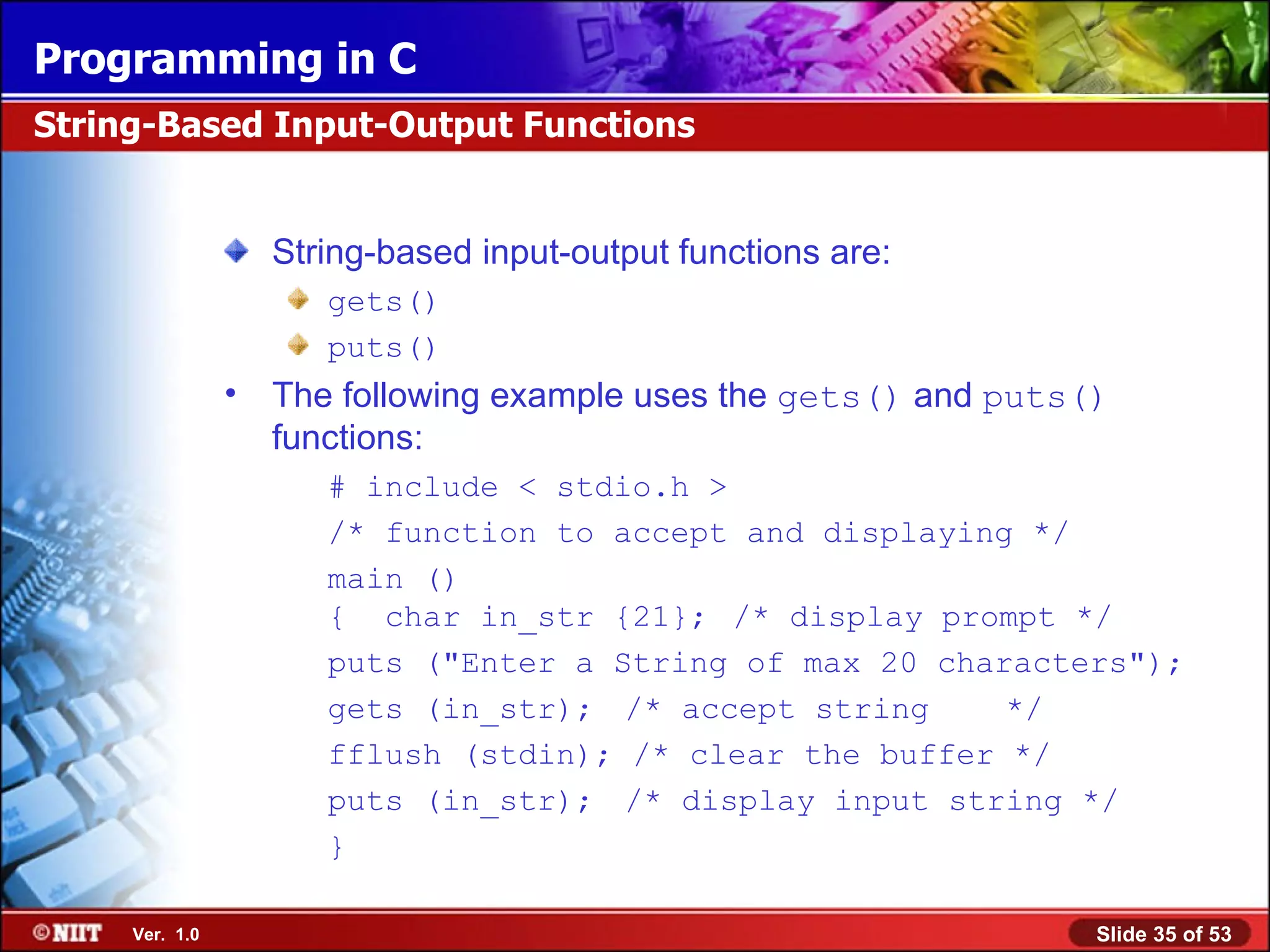
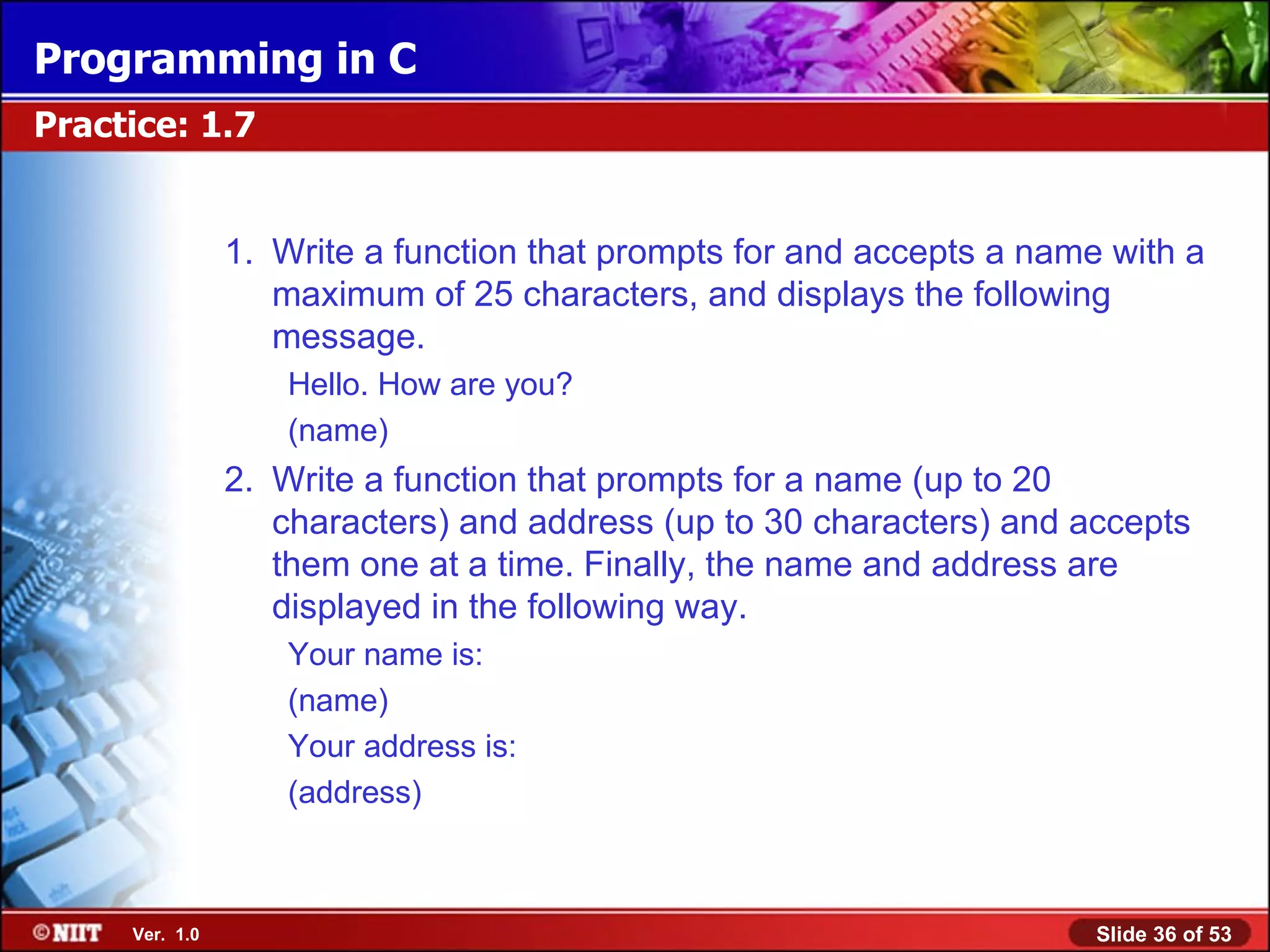
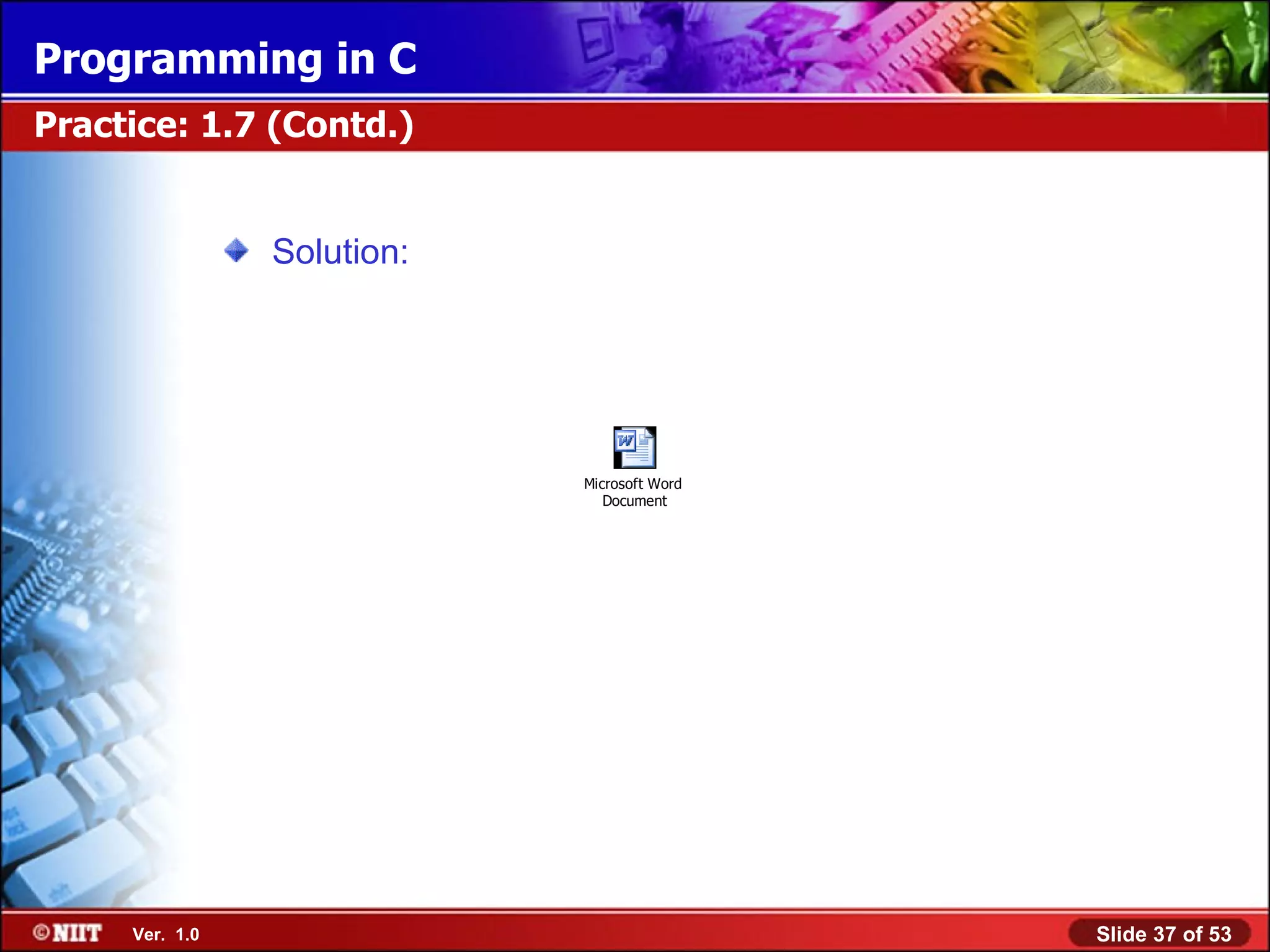
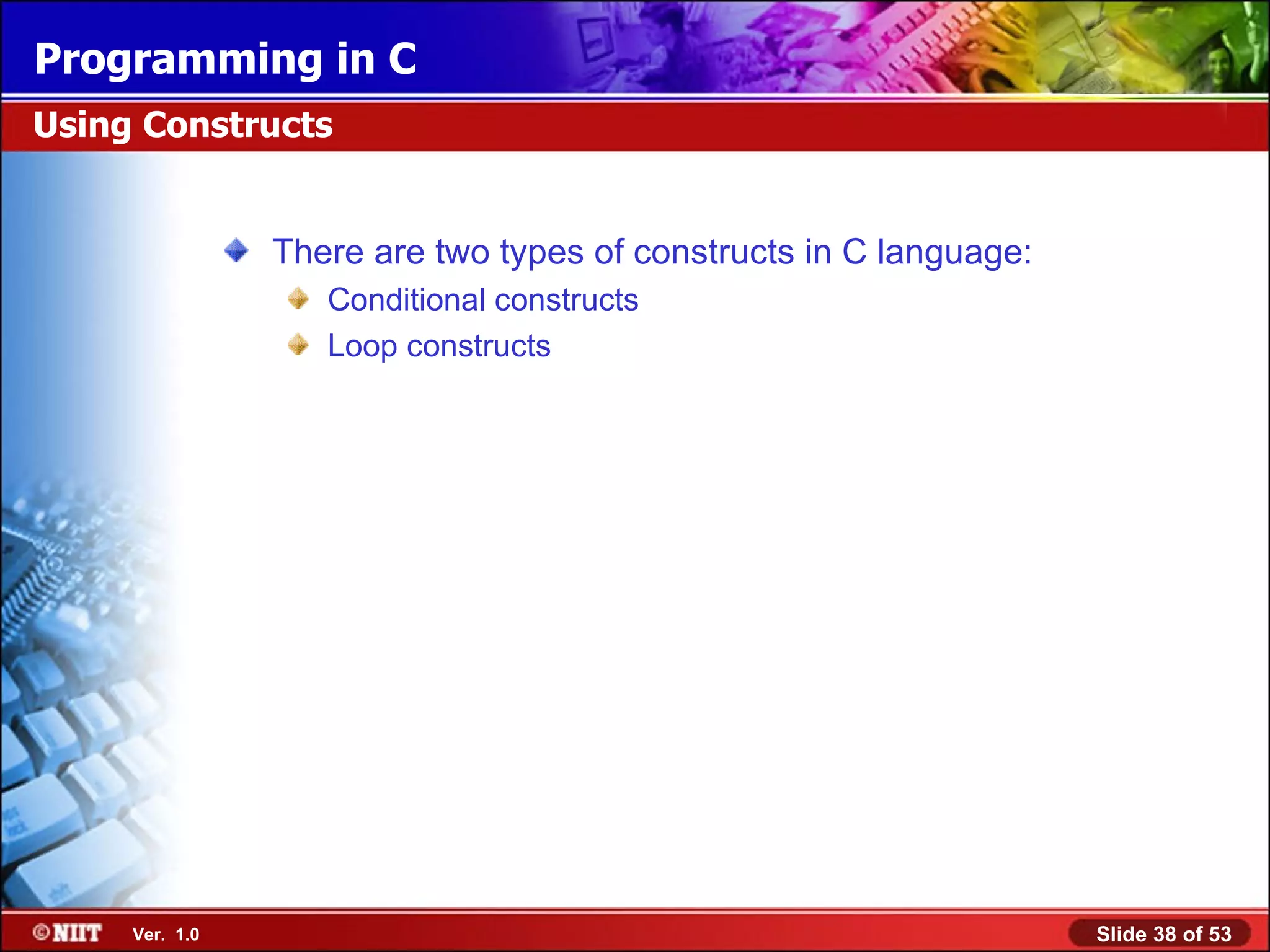
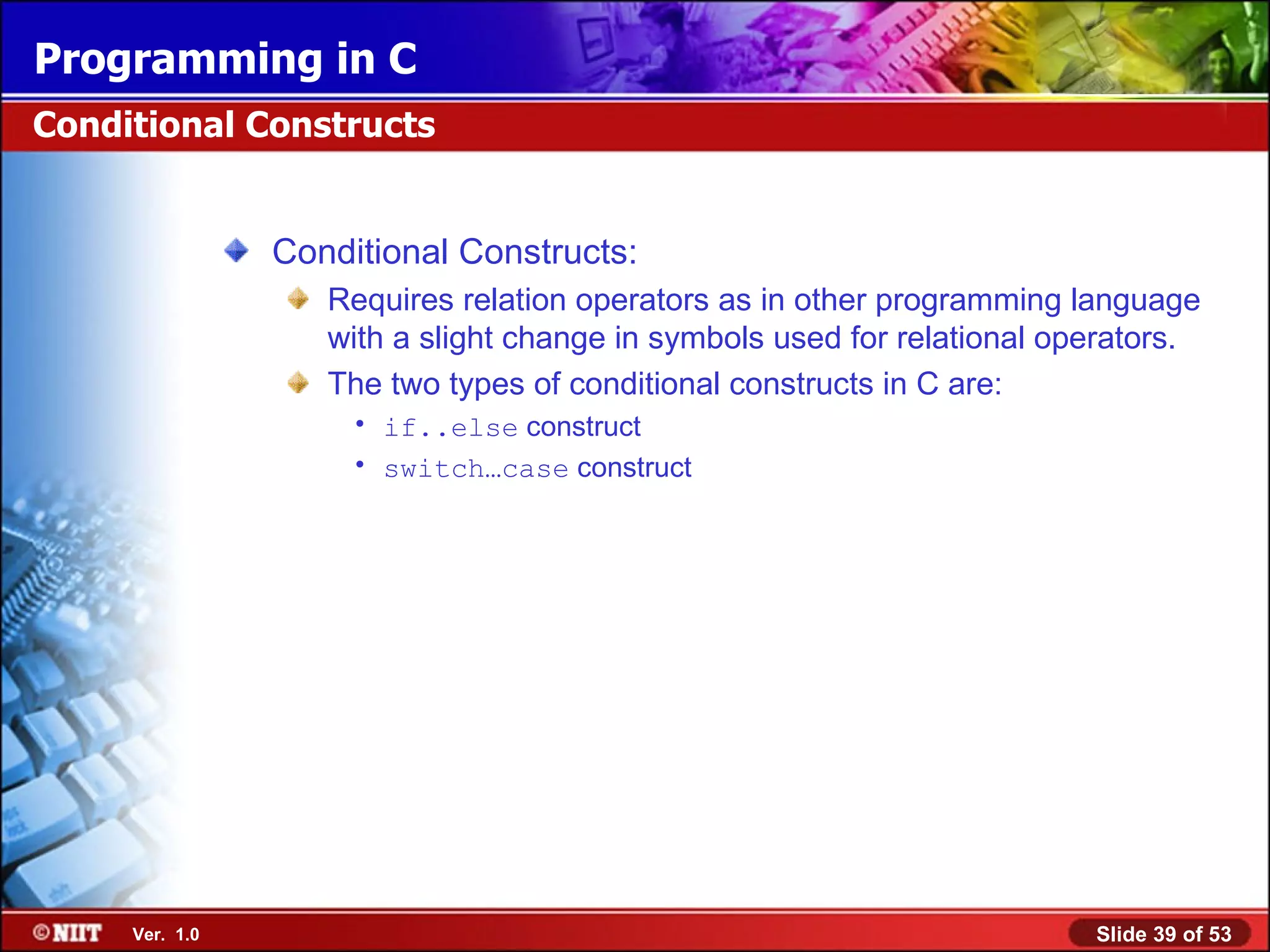
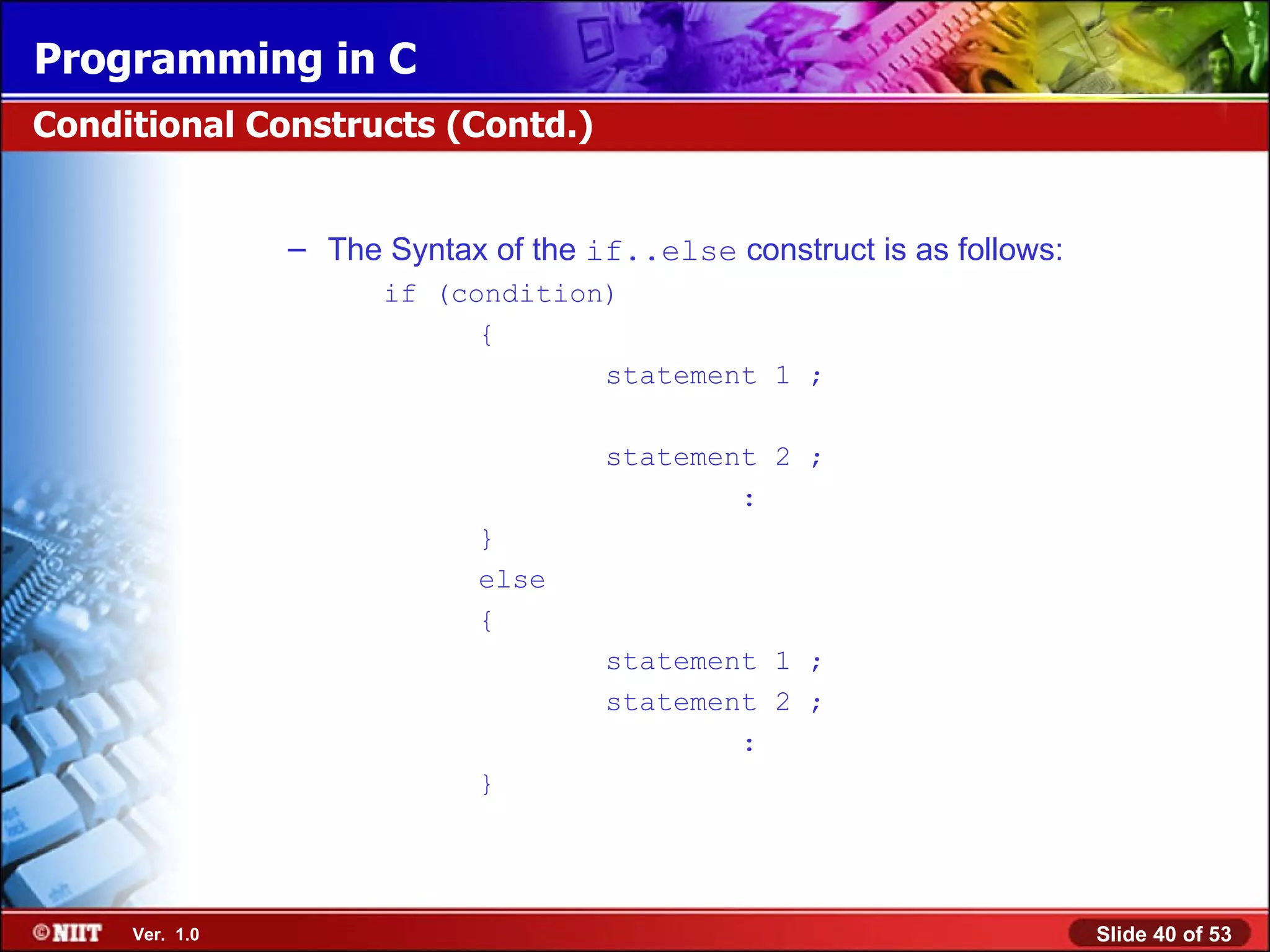
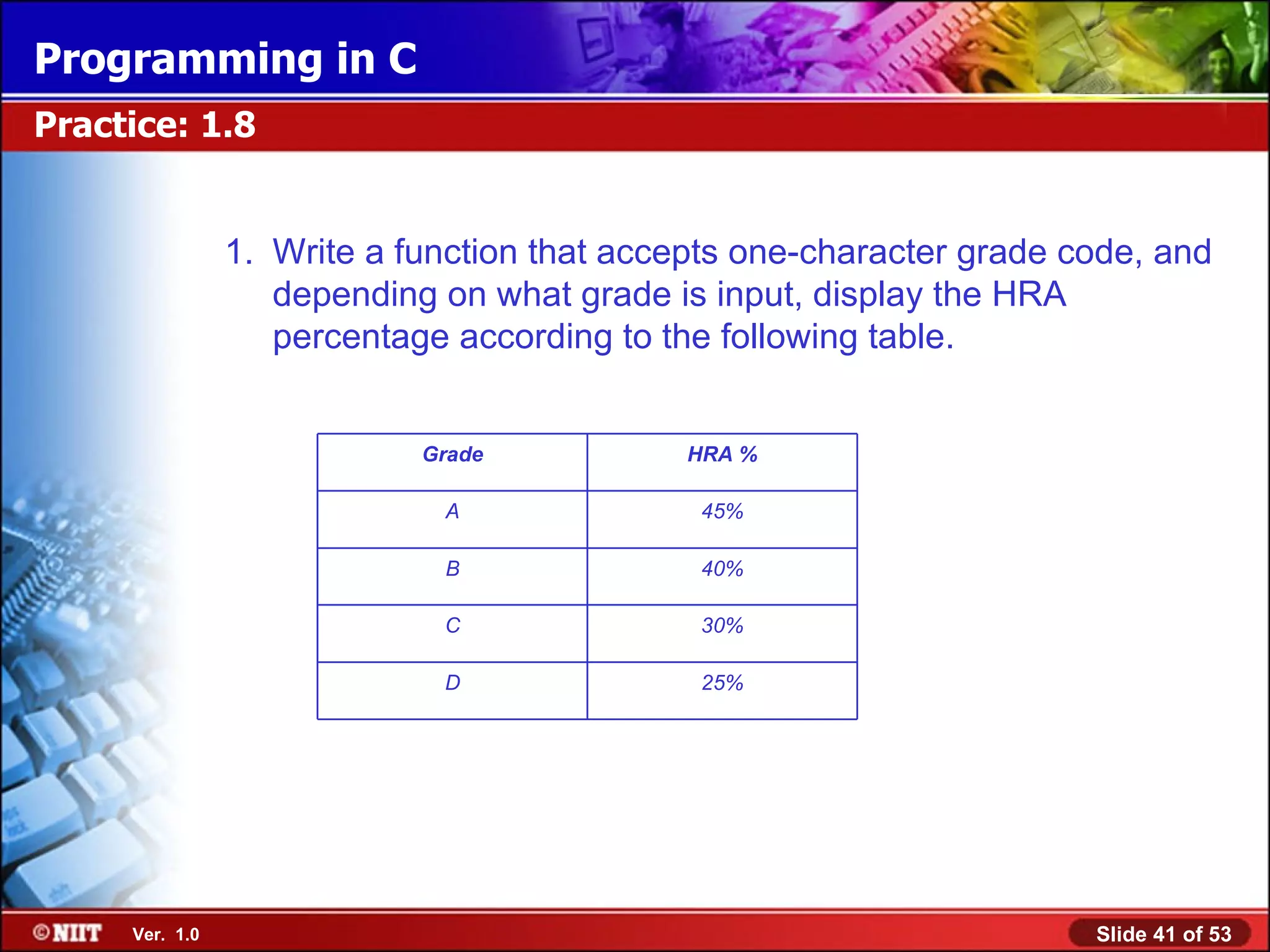
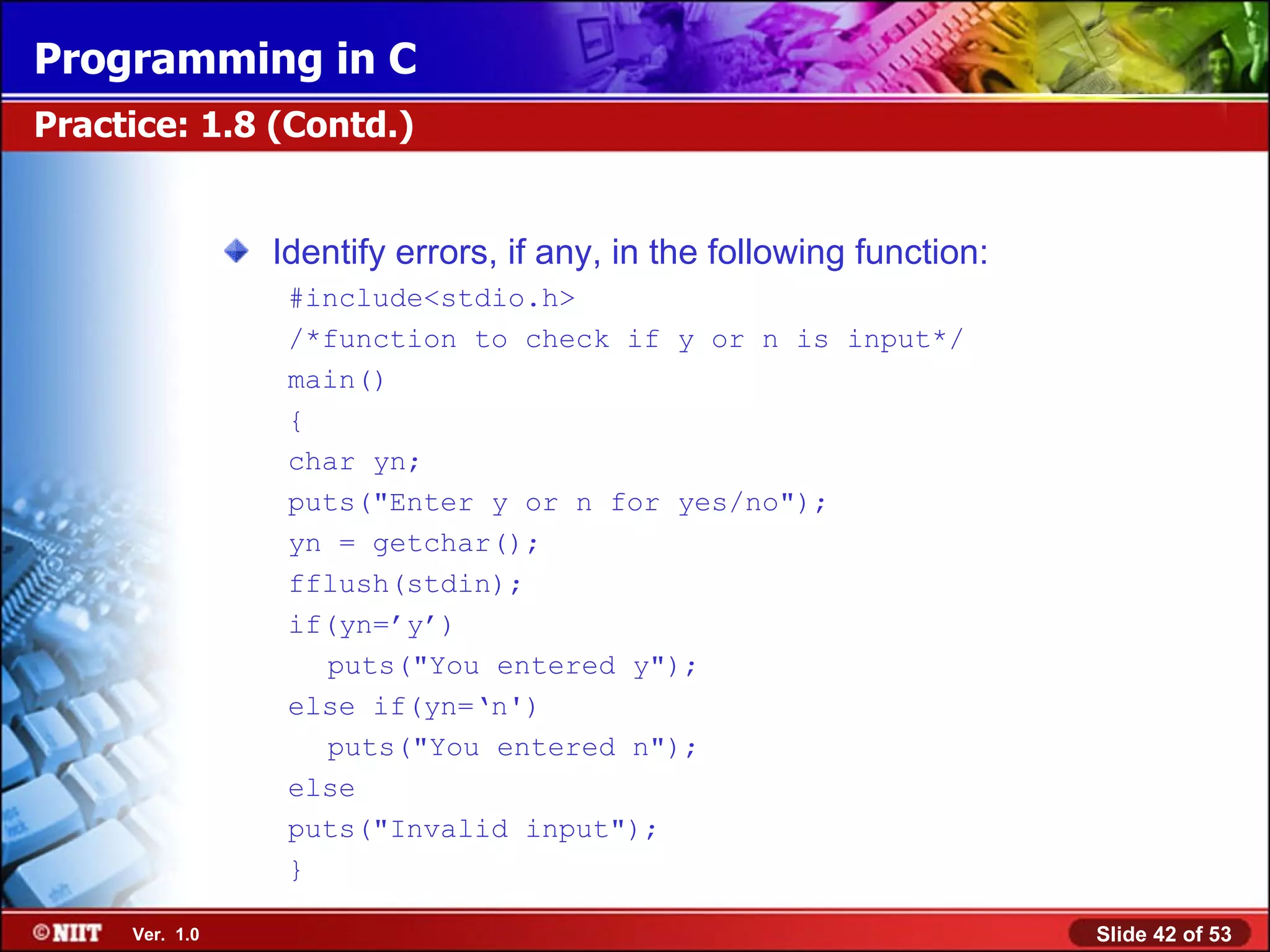
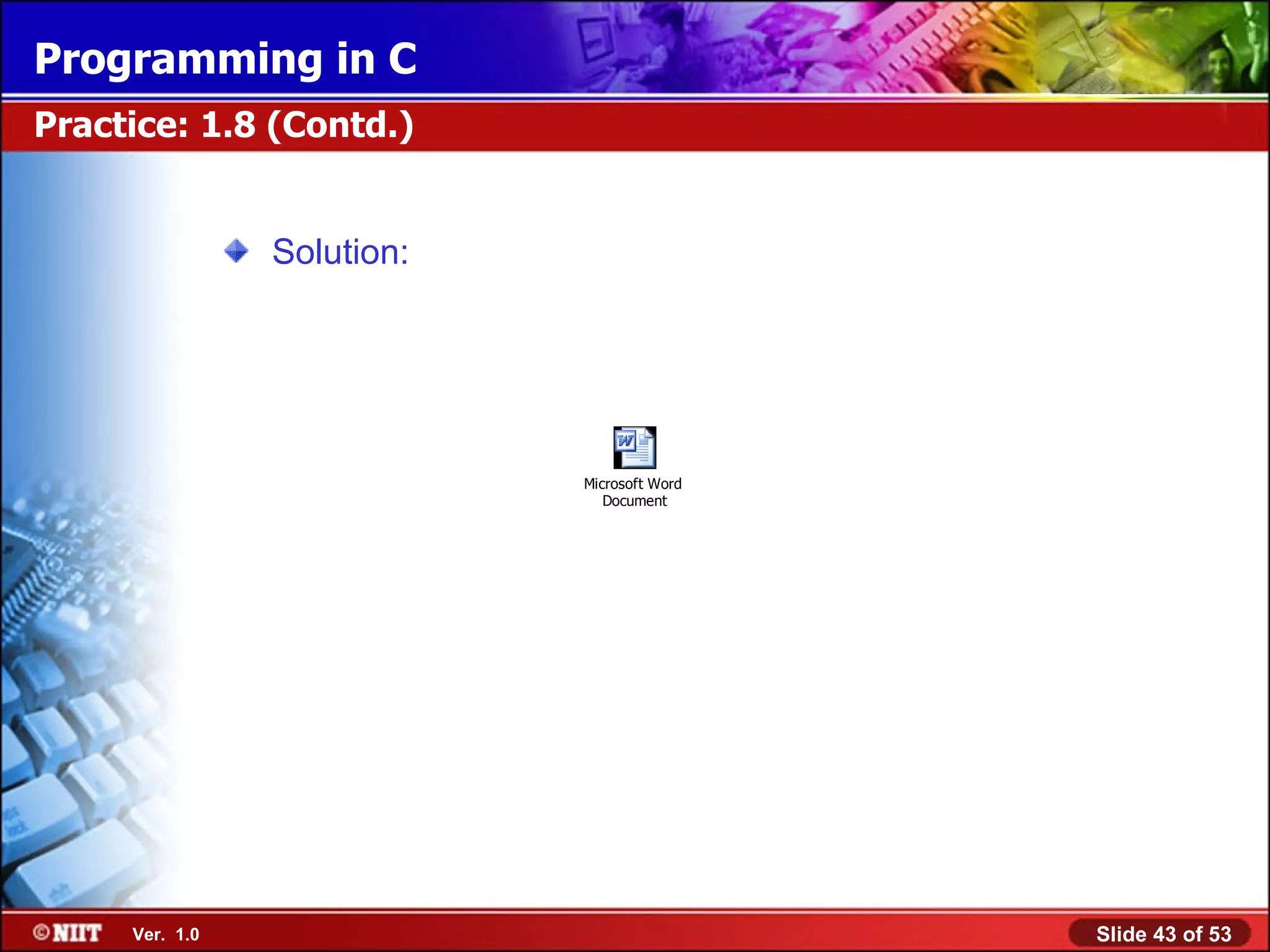
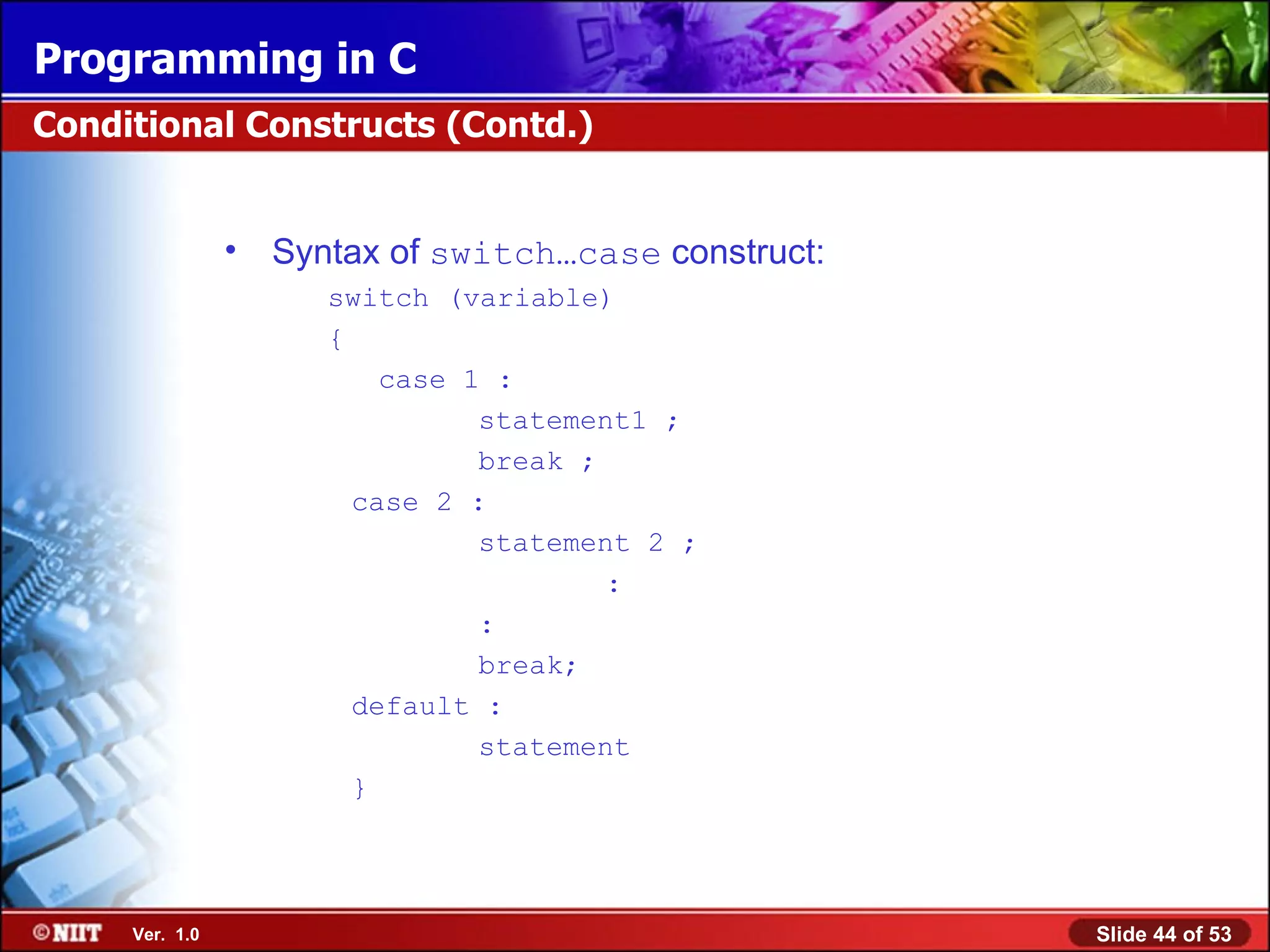
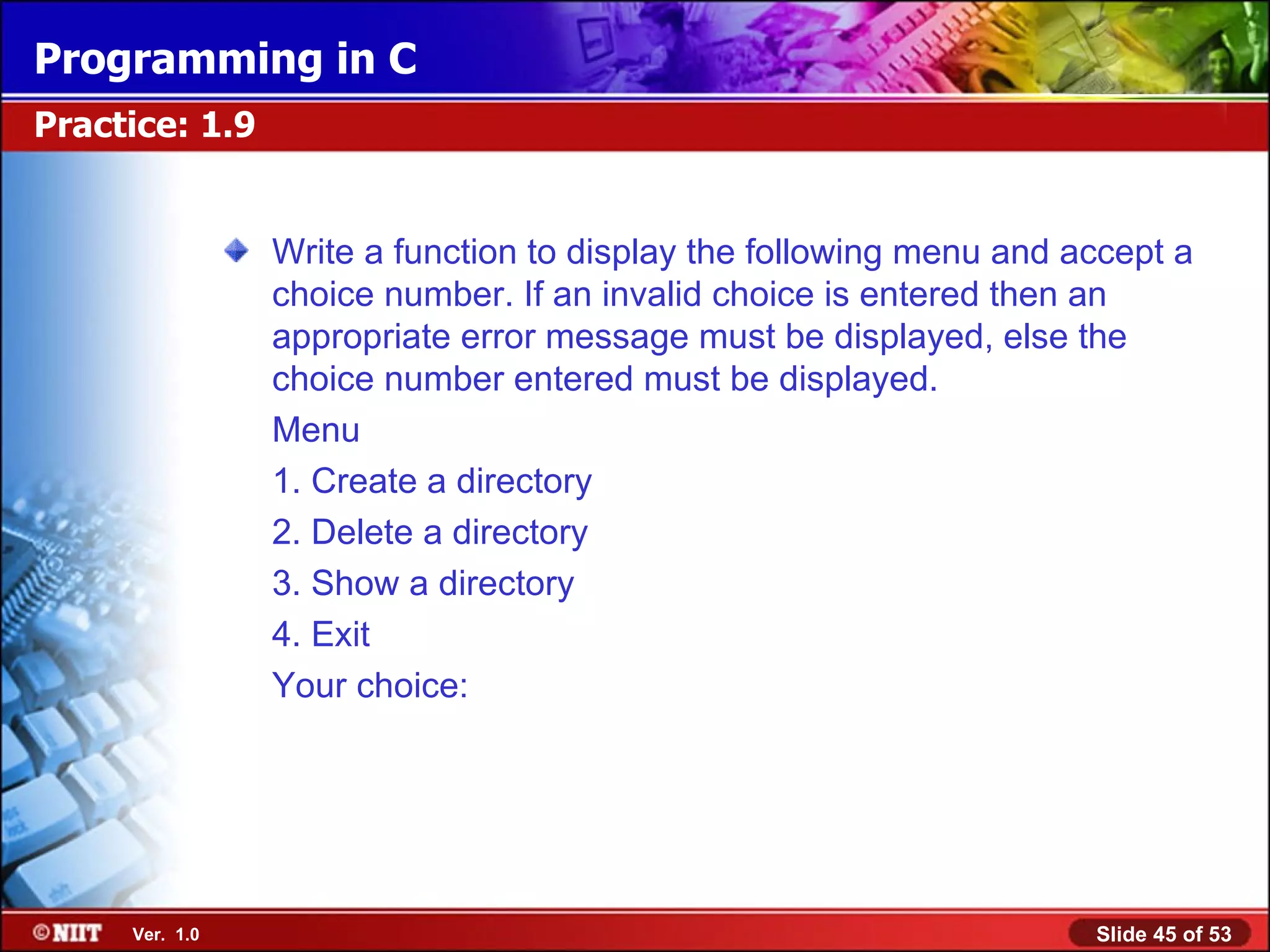
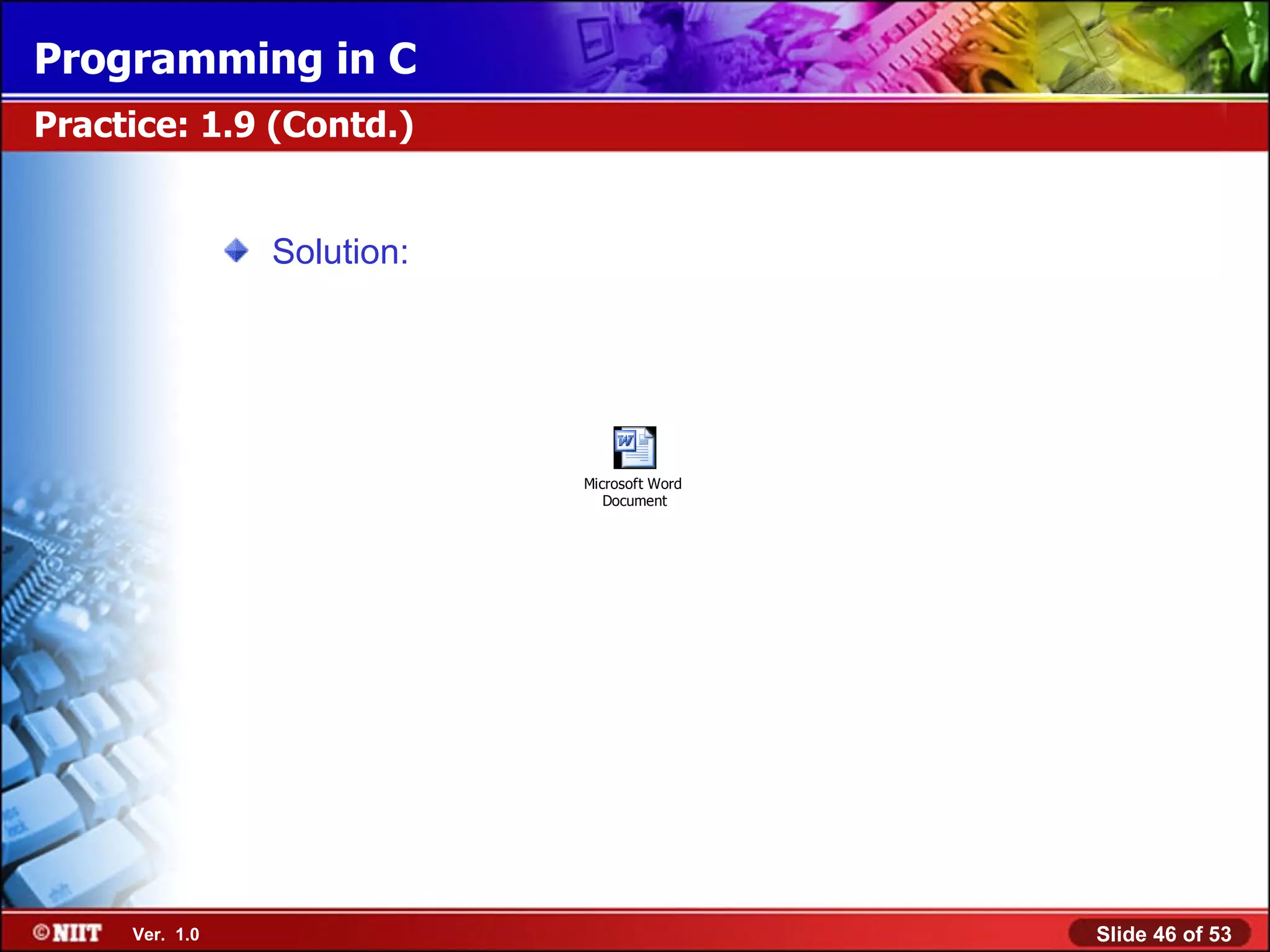
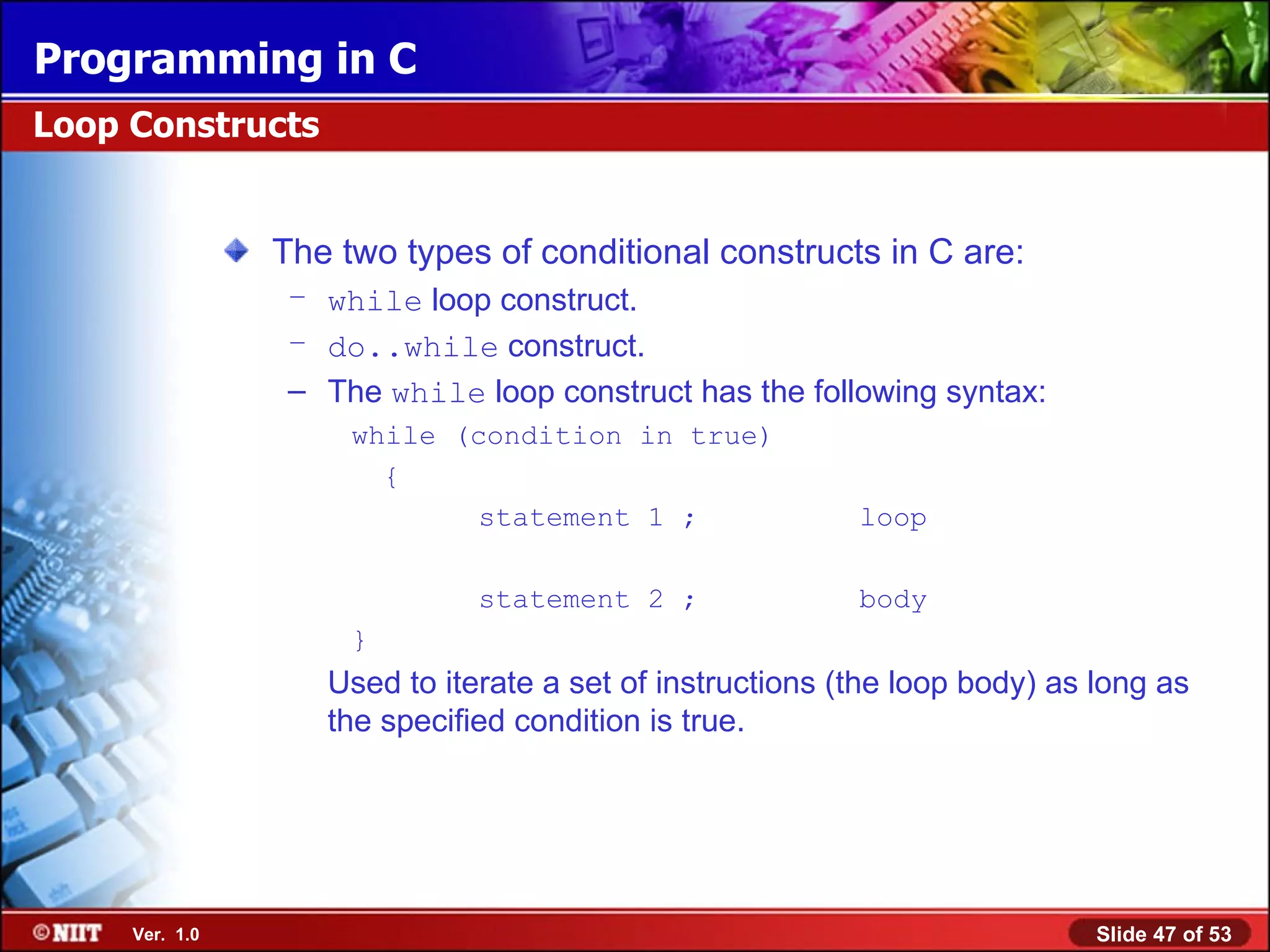
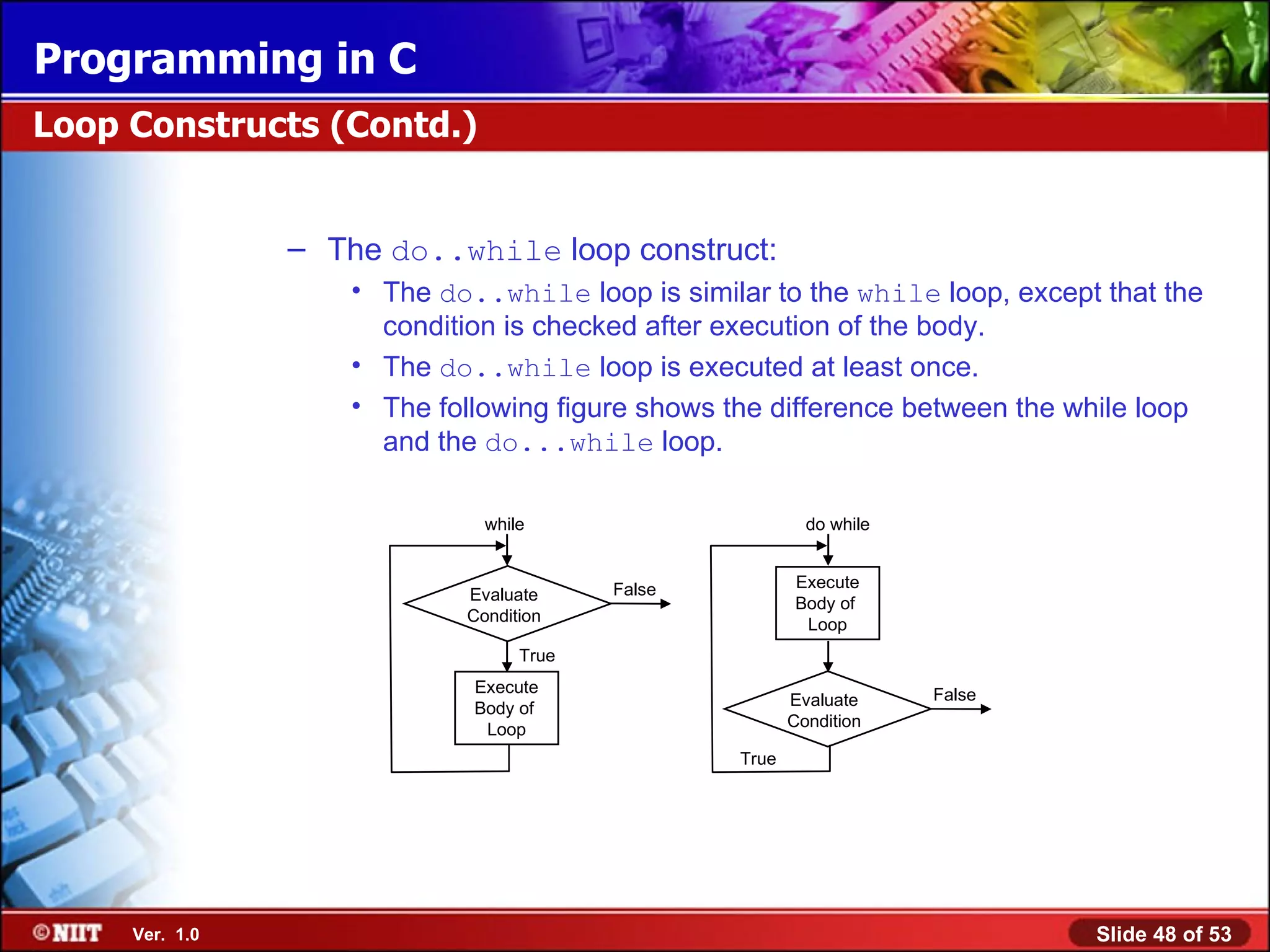
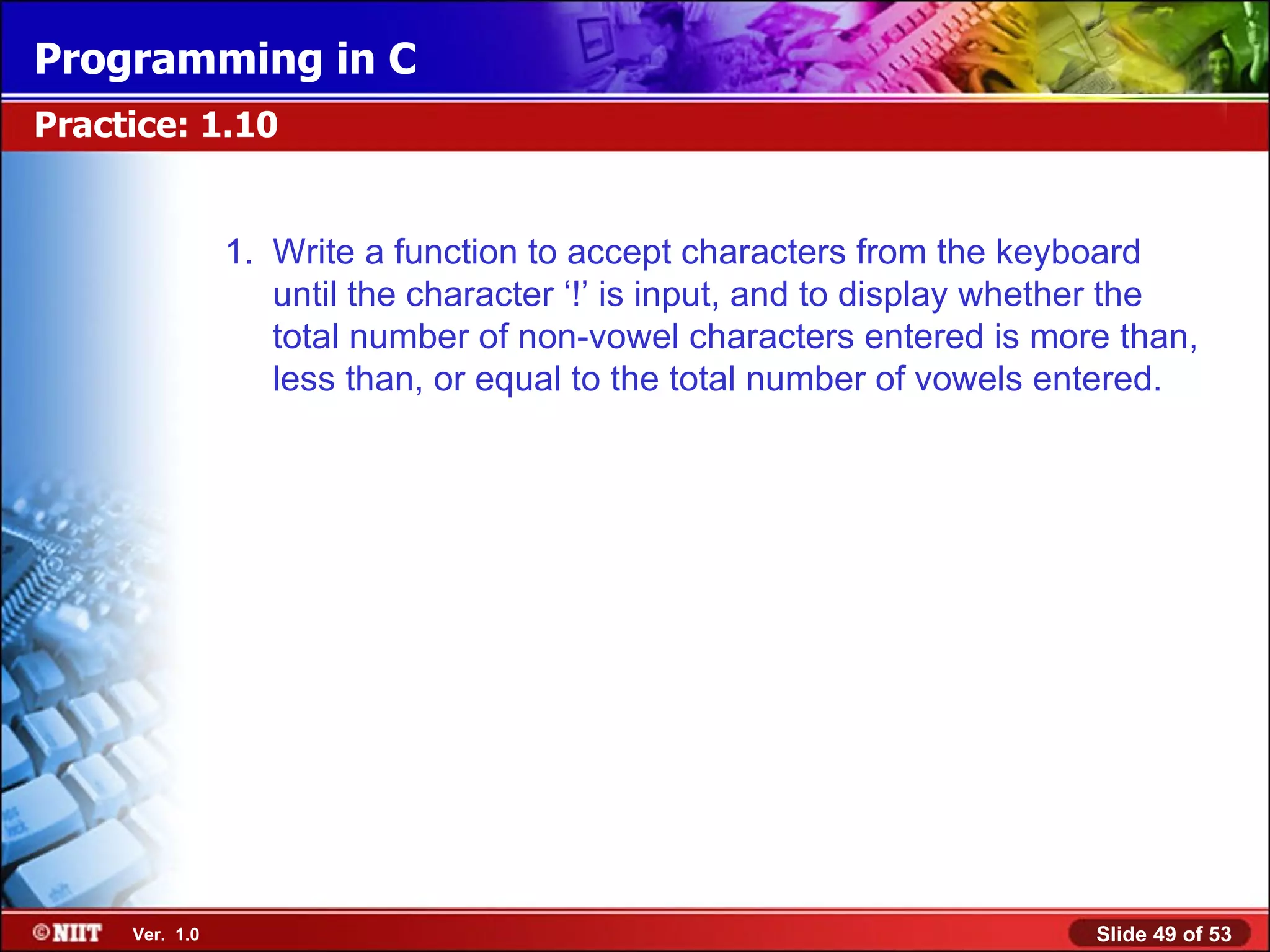
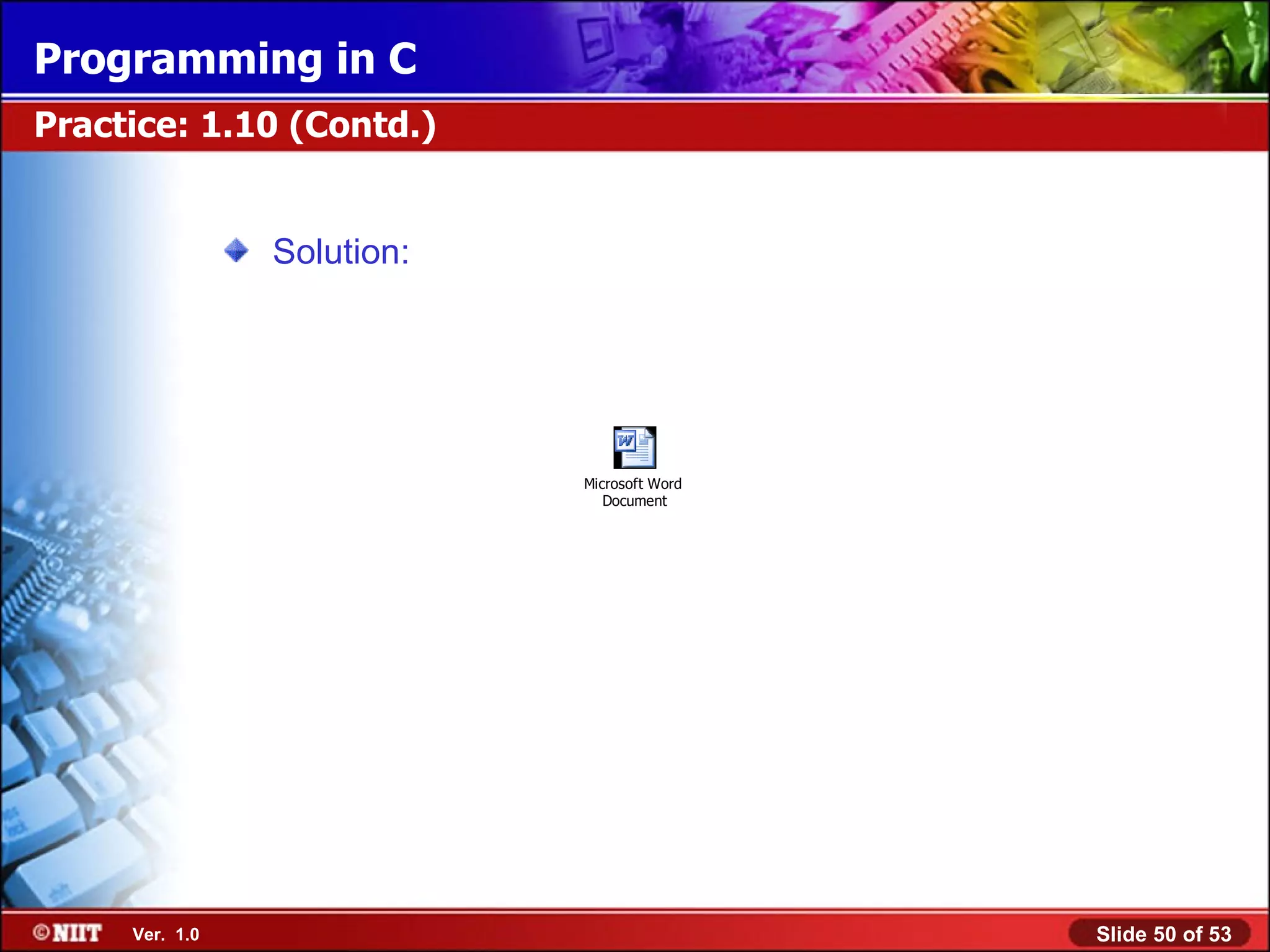
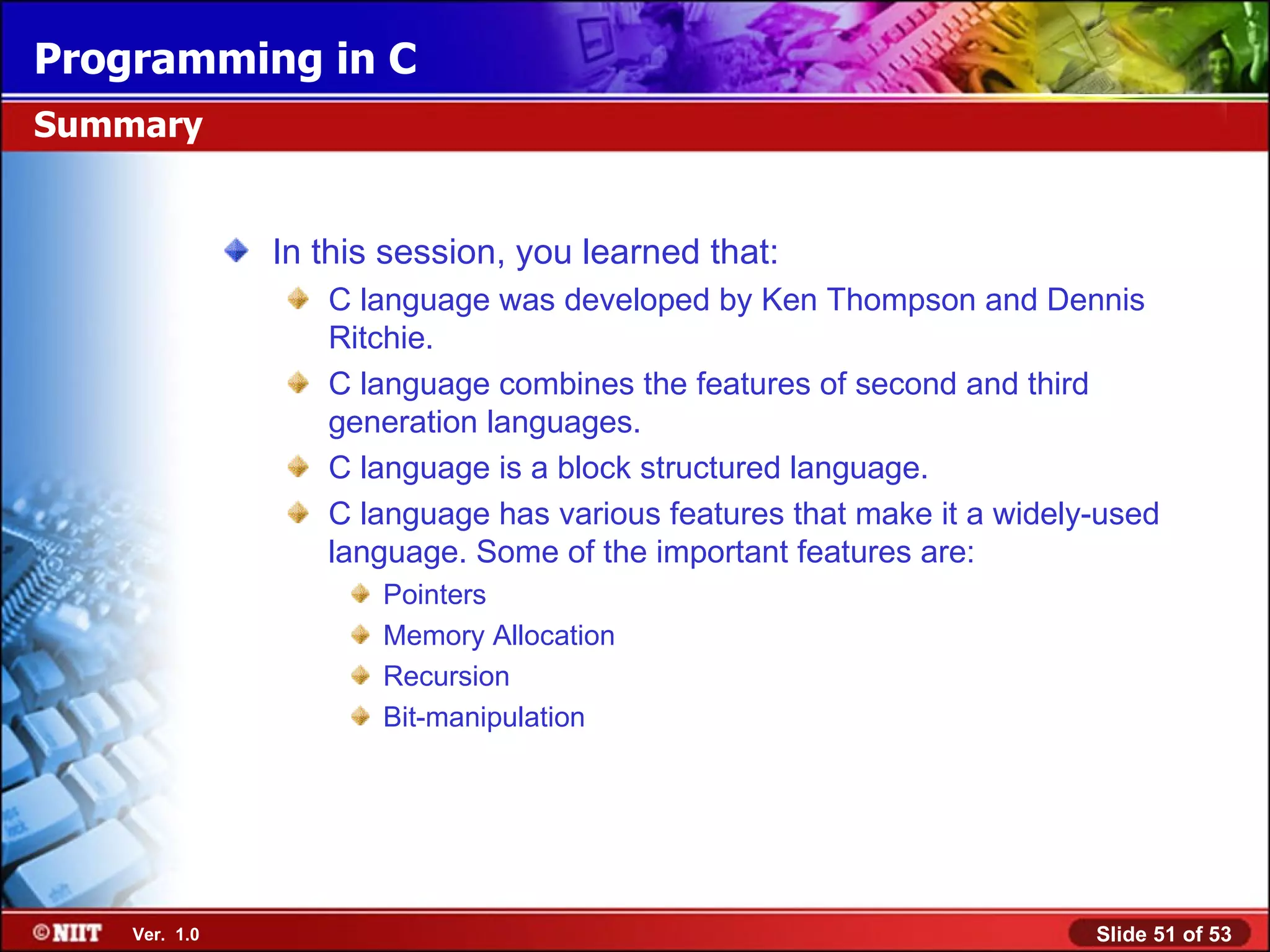
![The types of data structures provided by C can be classified under the following categories: Fundamental data types: Include the data types, which are used for actual data representation in the memory. Derived data types: Are based on fundamental data types. Fundamental data types: char , int , and float Some of the derived data types are: short int , long int , and double float Definition of memory for any data, both fundamental and derived data types, is done in the following format: [data type] [variable name],...; Summary (Contd.)](https://image.slidesharecdn.com/cprogrammingsession01-110830105743-phpapp01/75/C-programming-session-01-52-2048.jpg)
